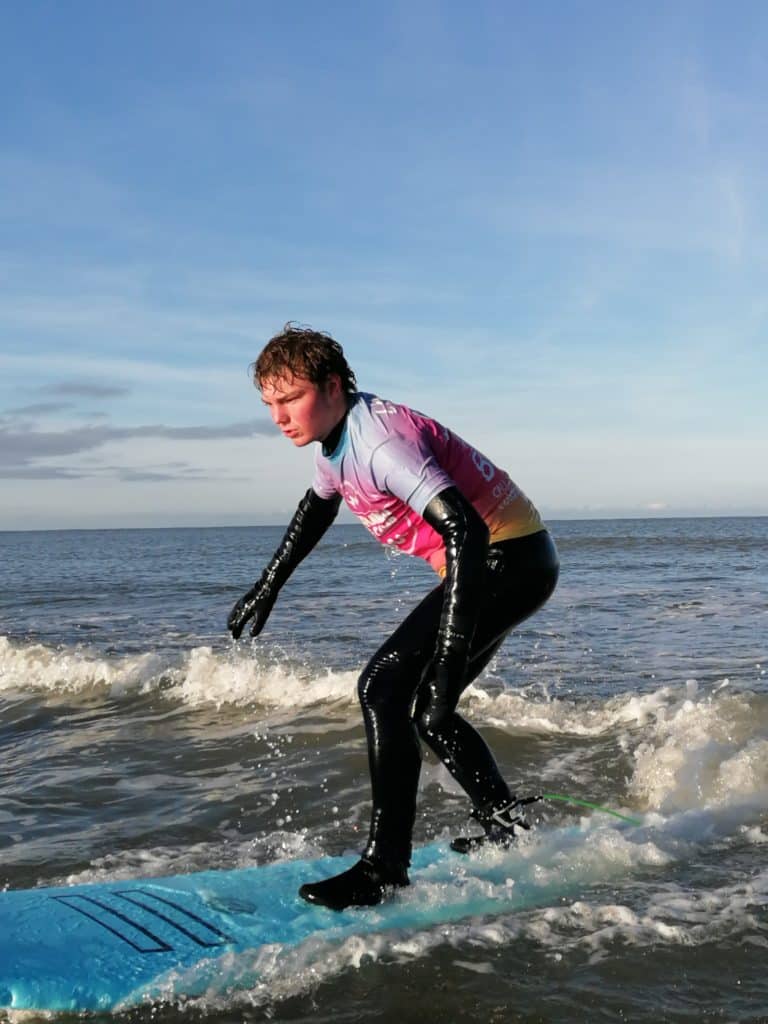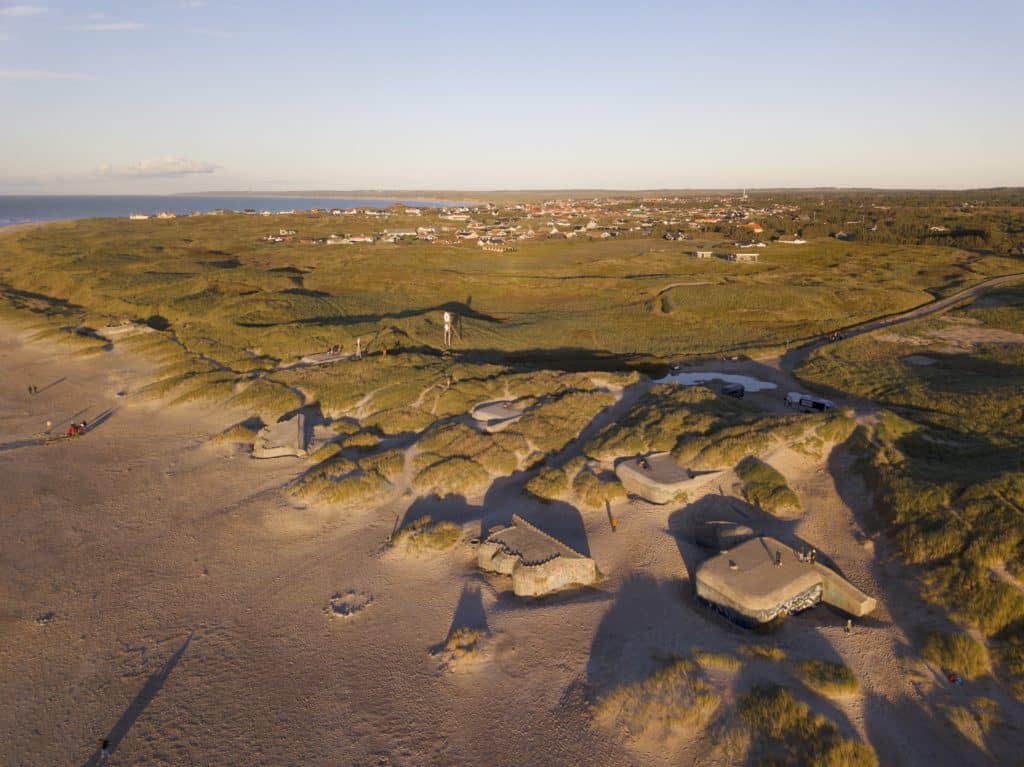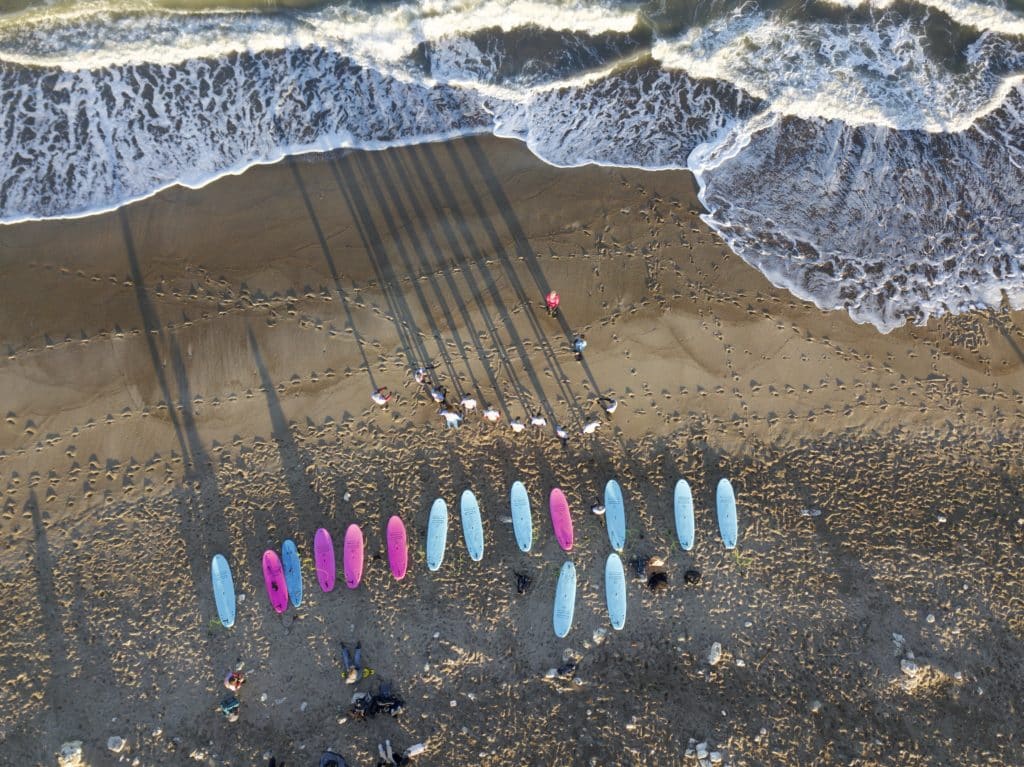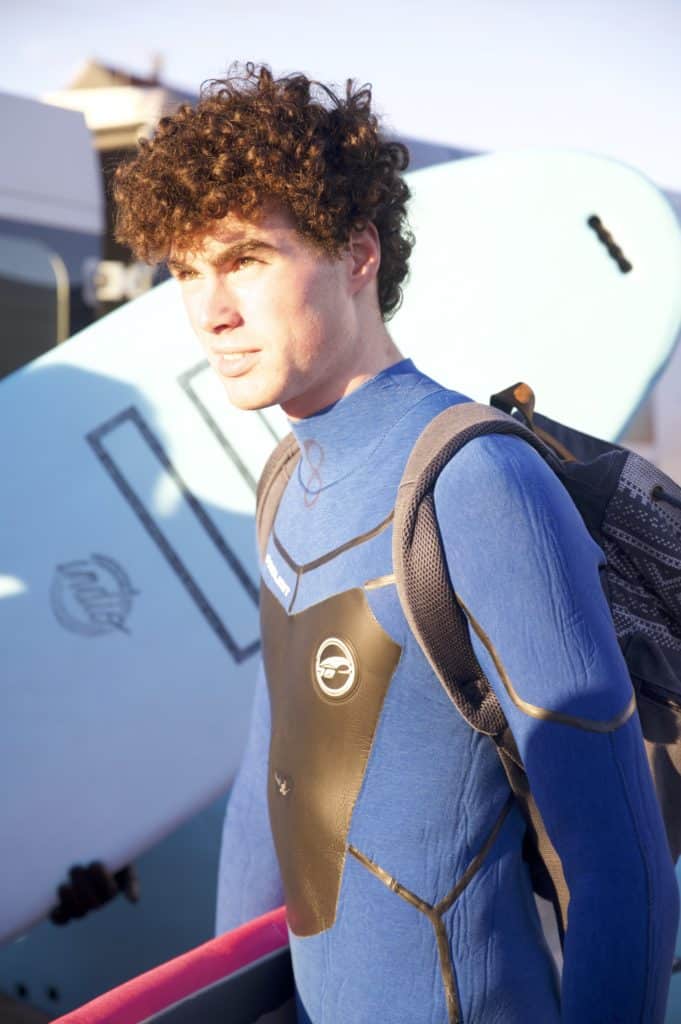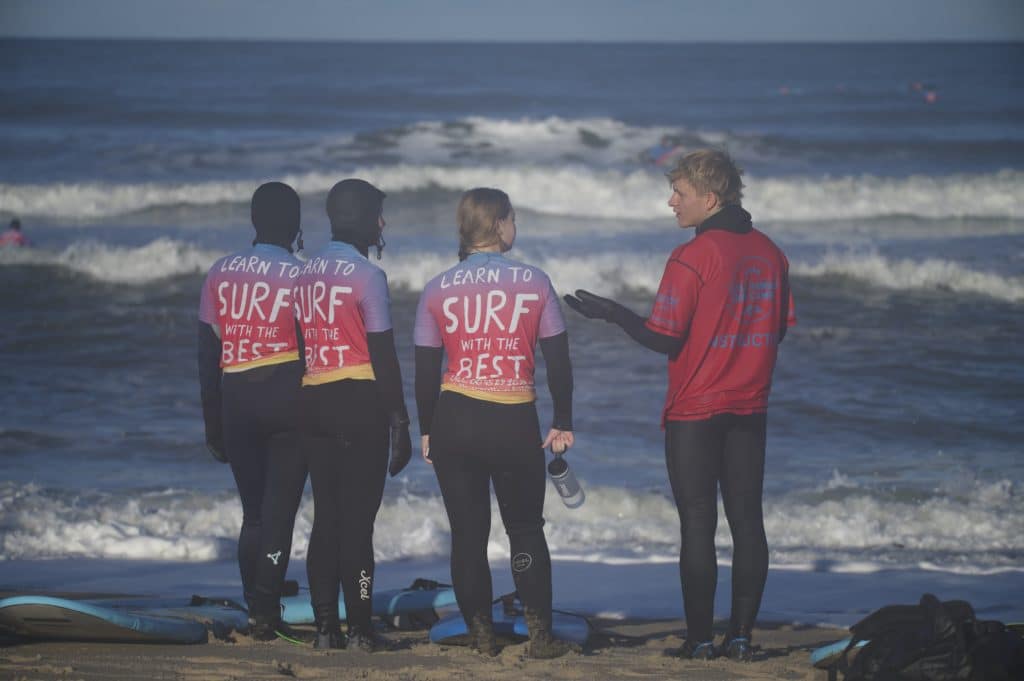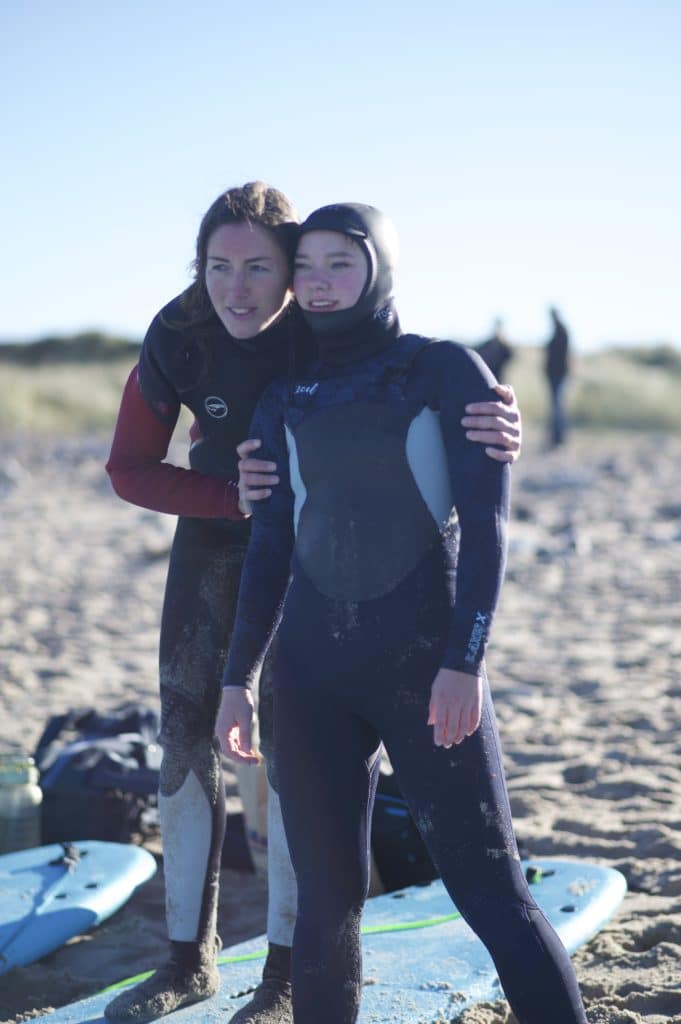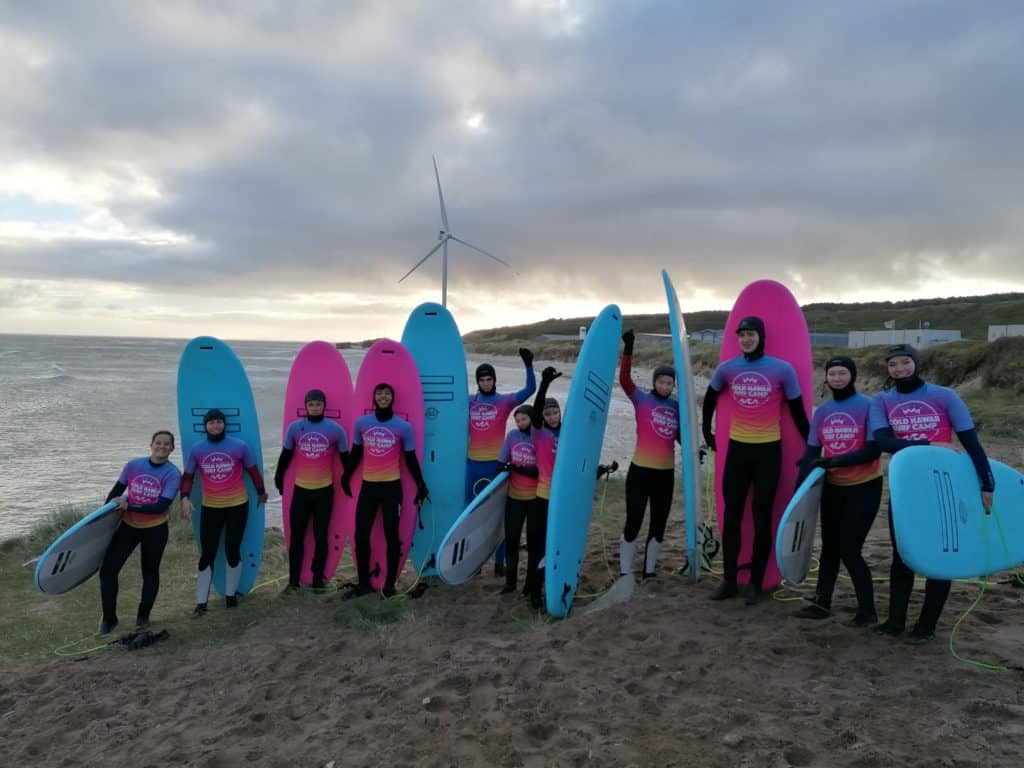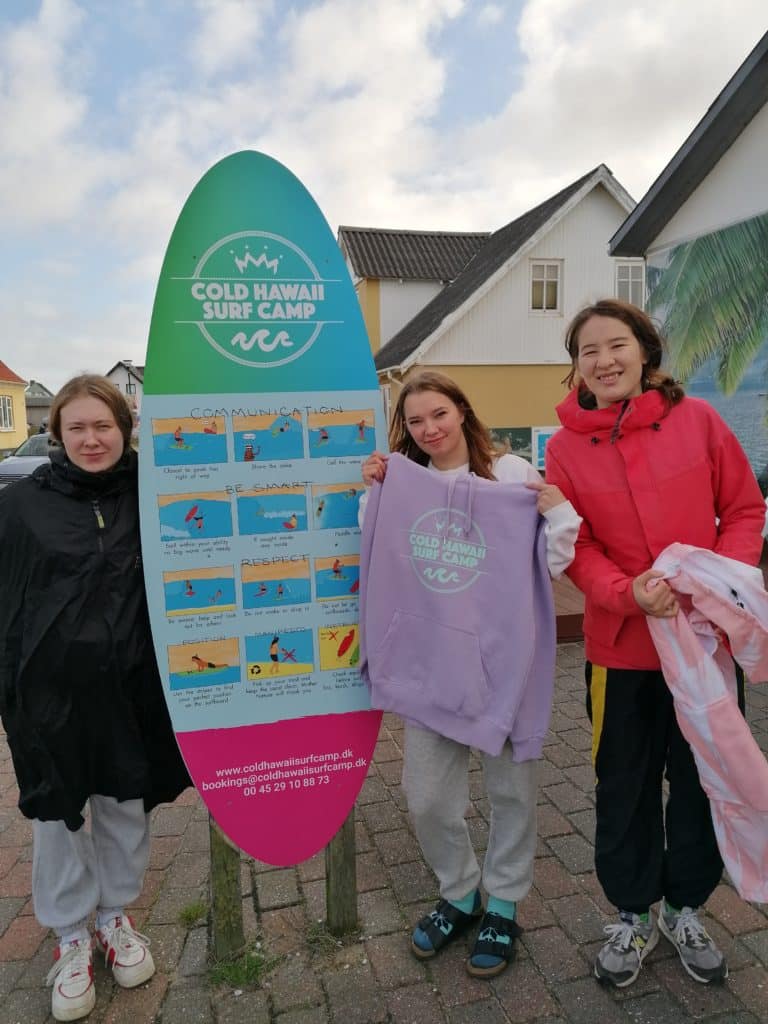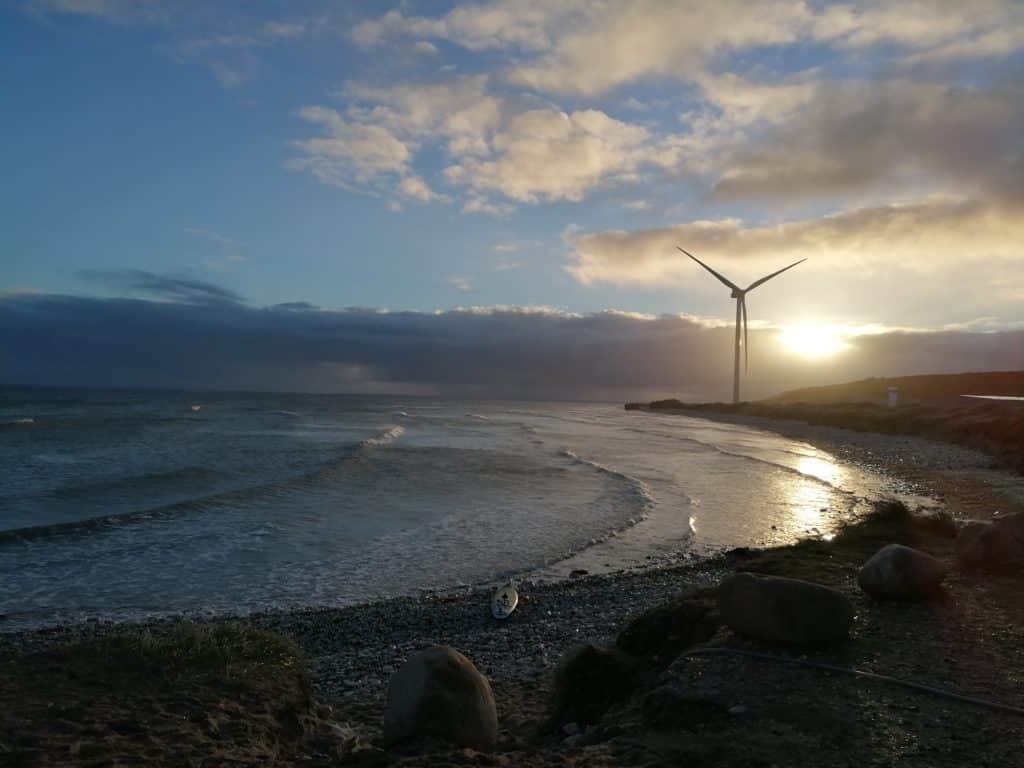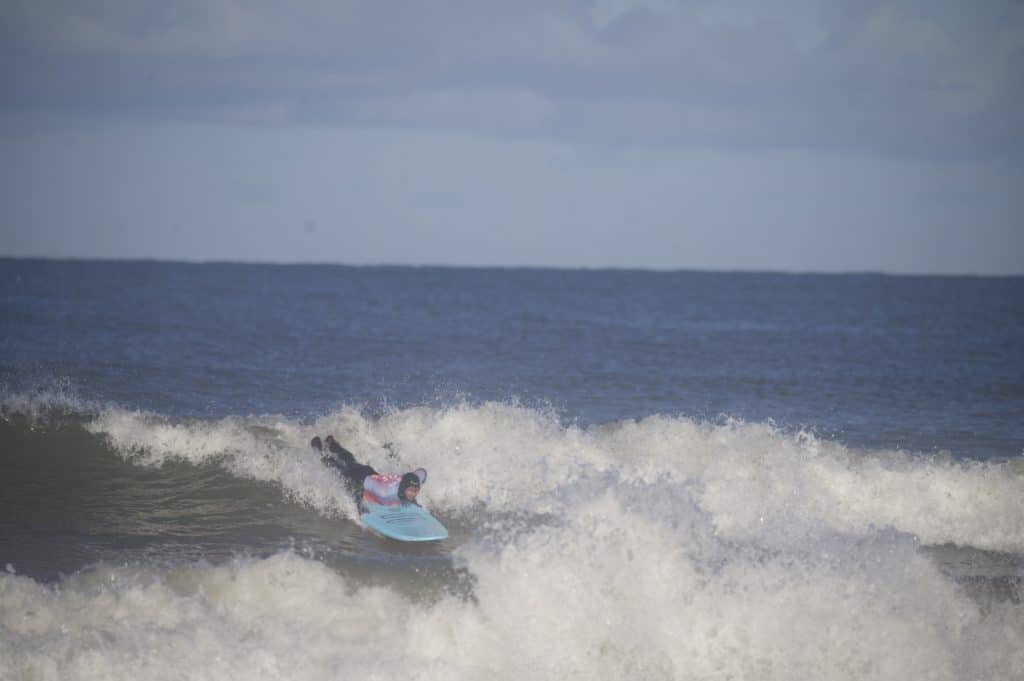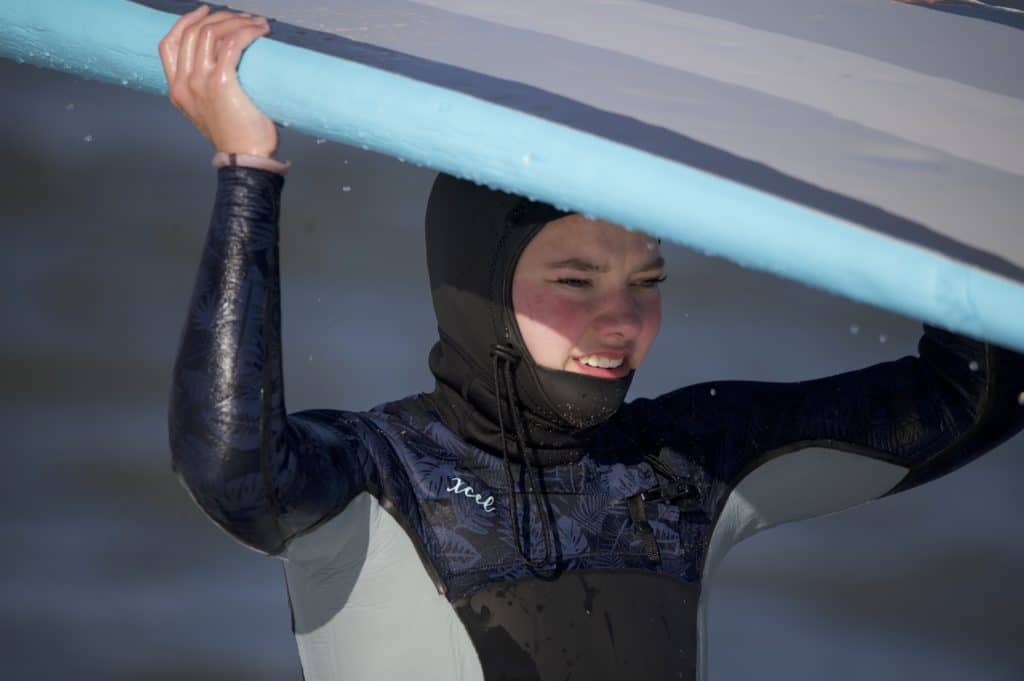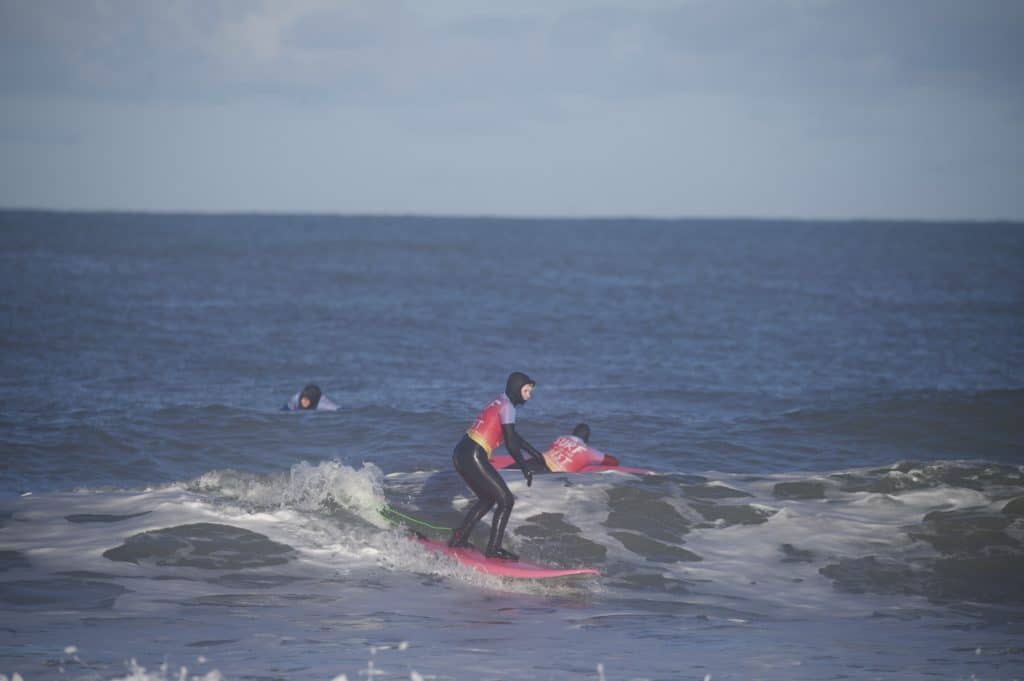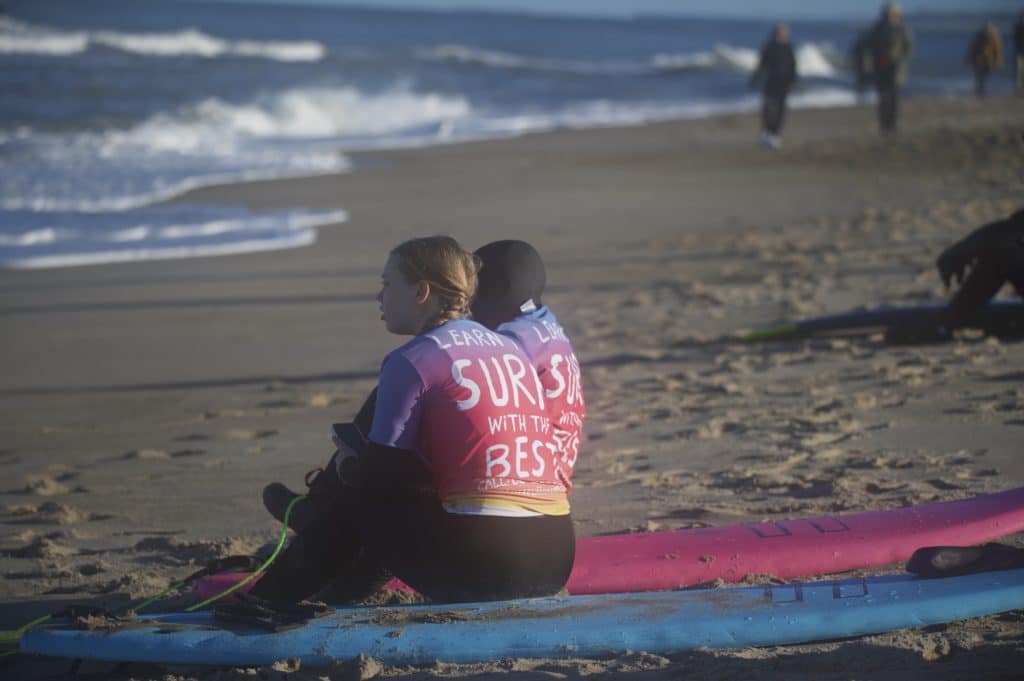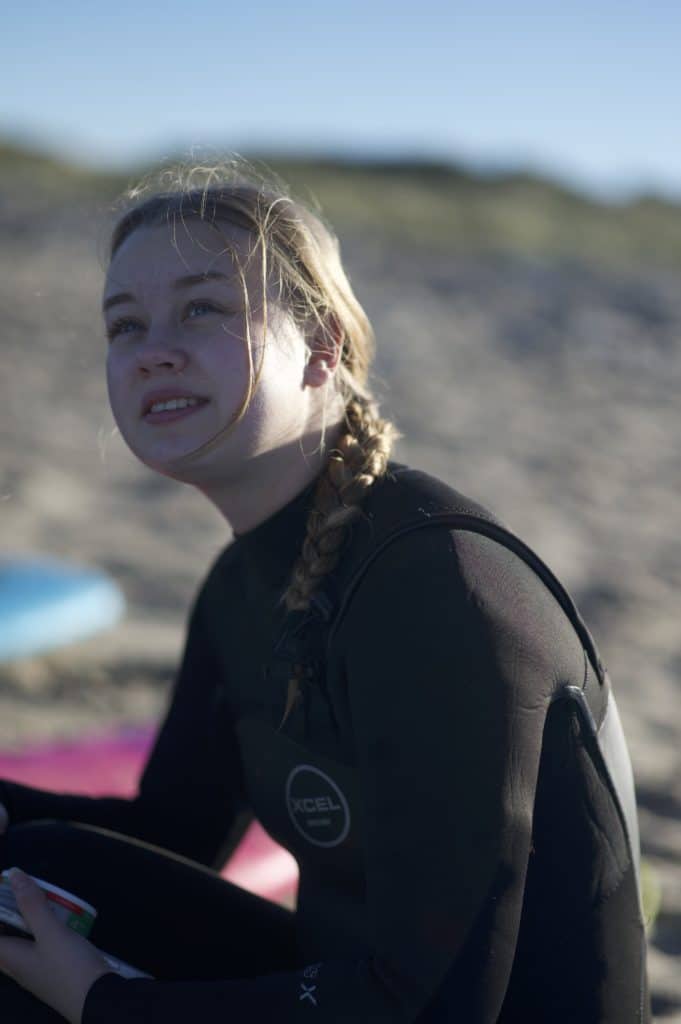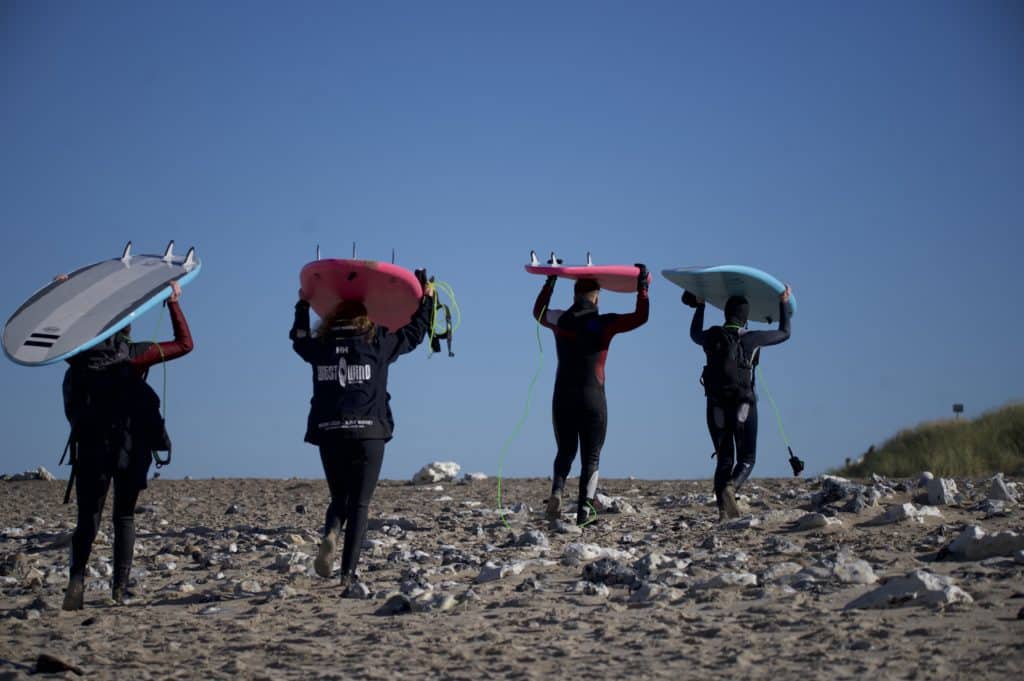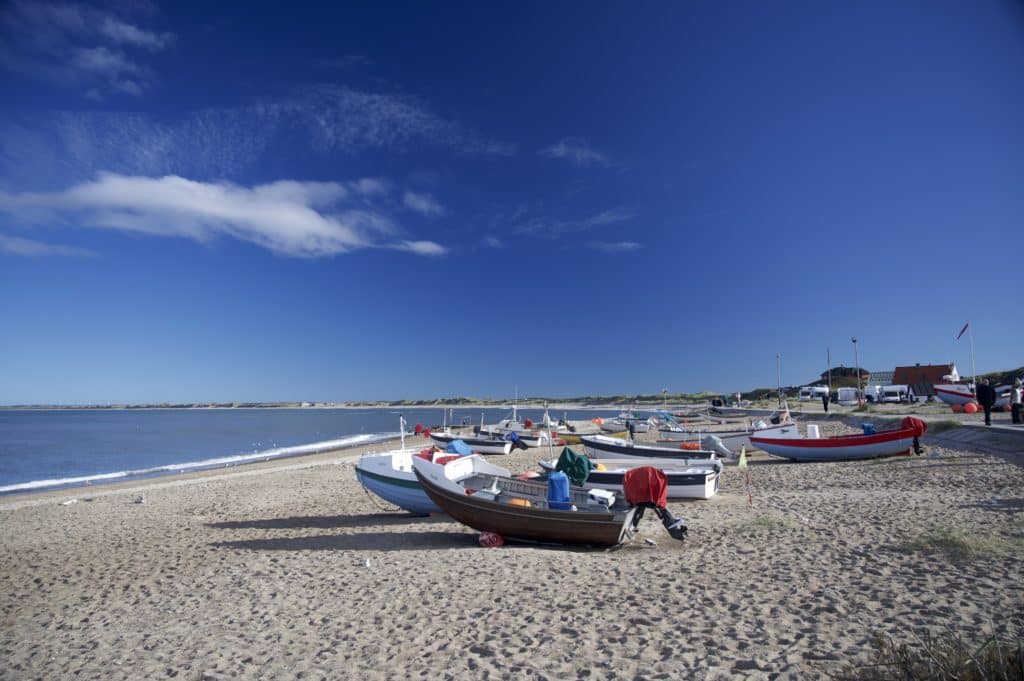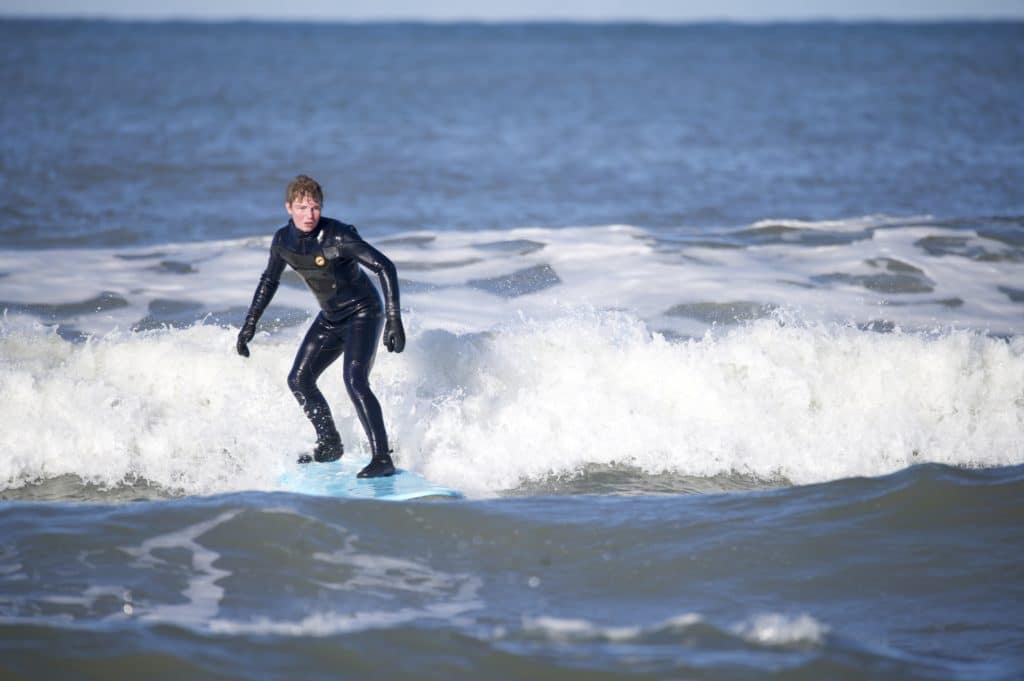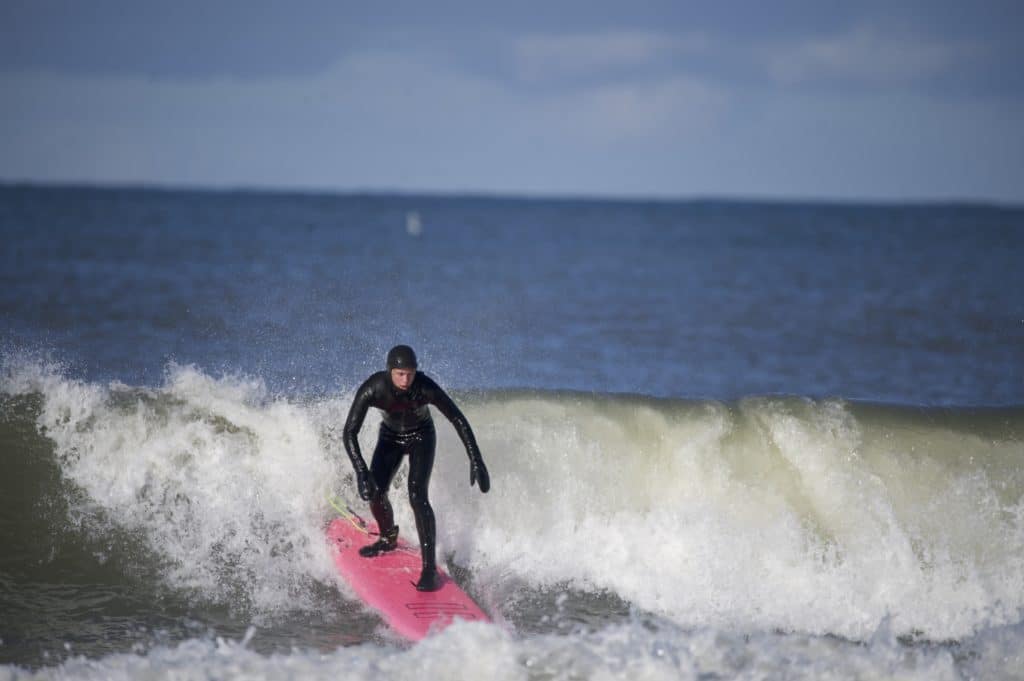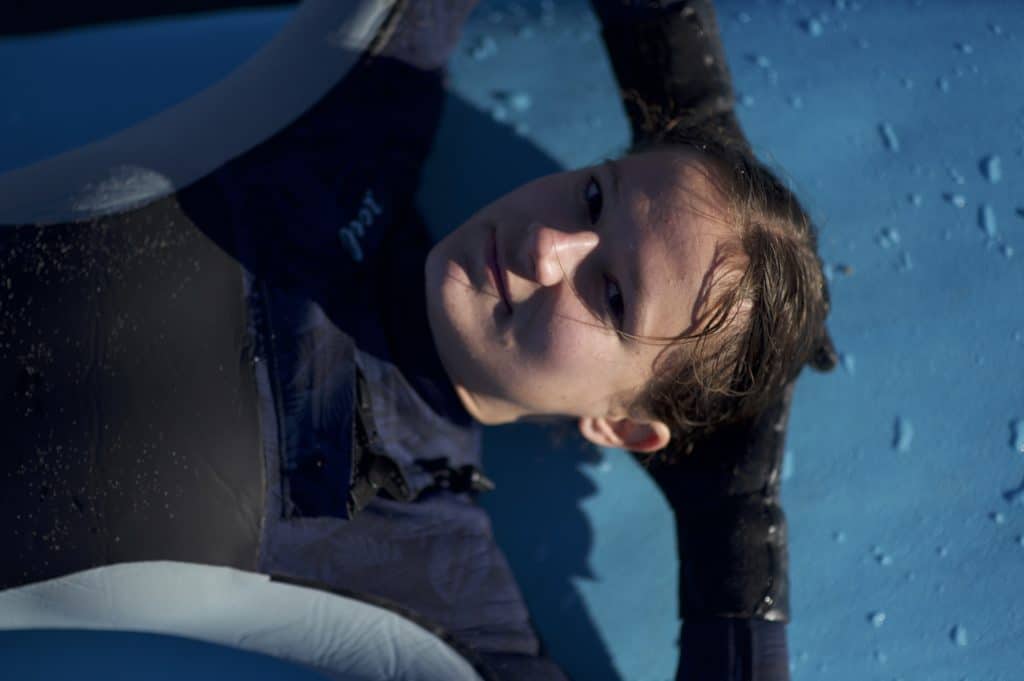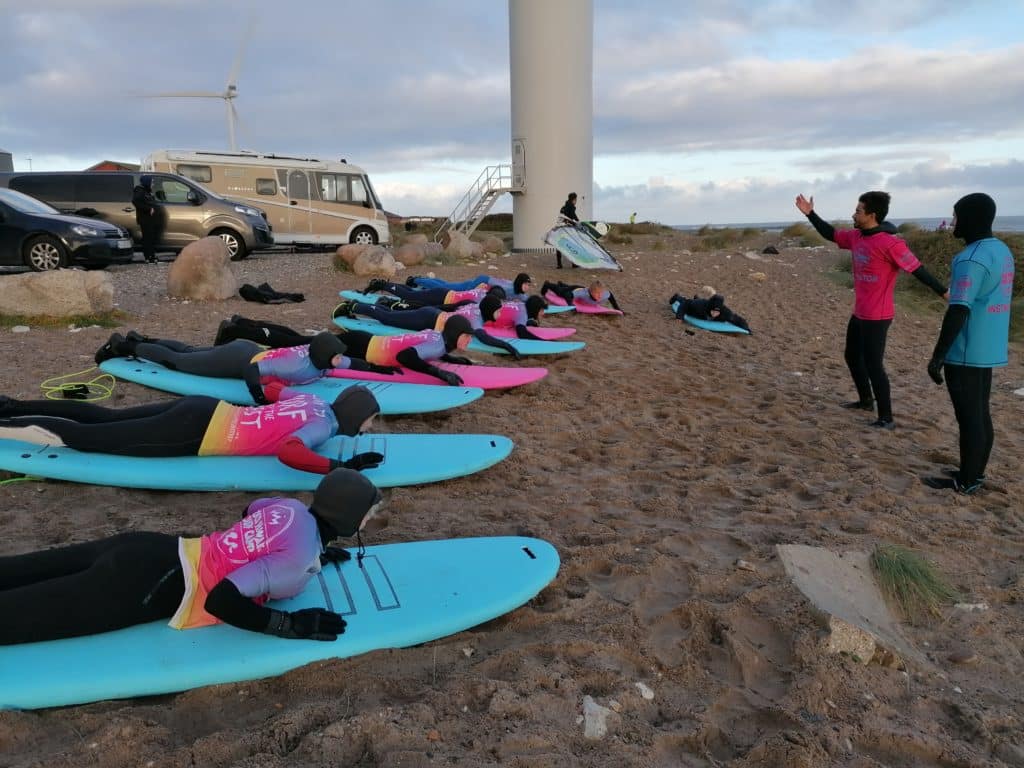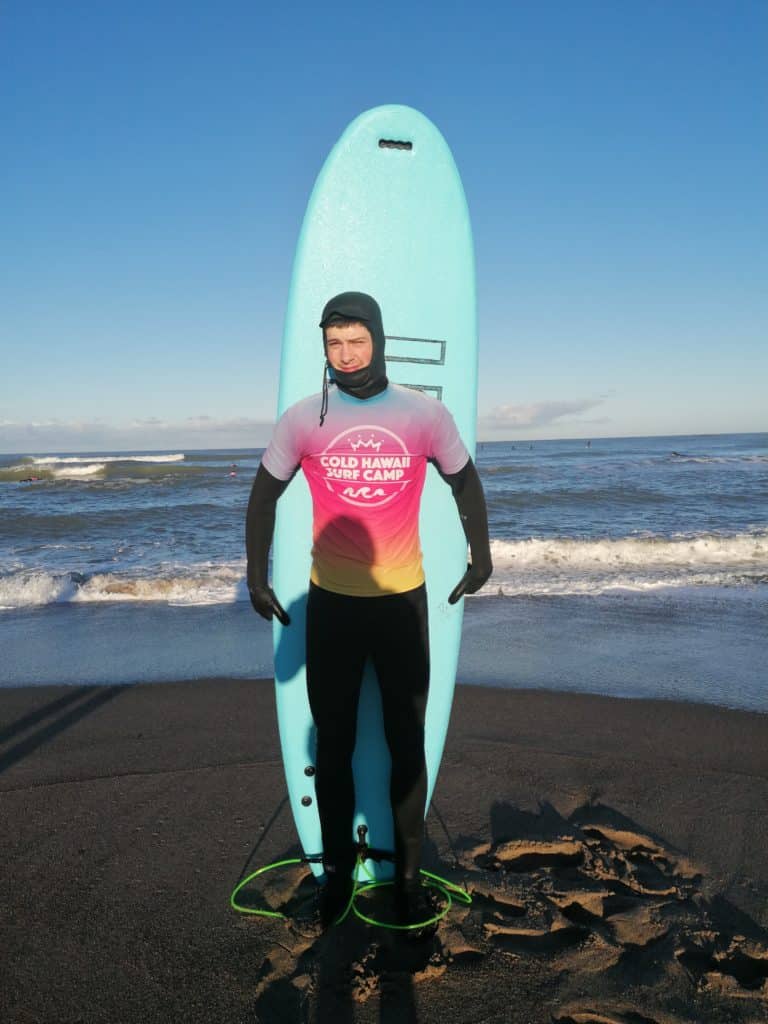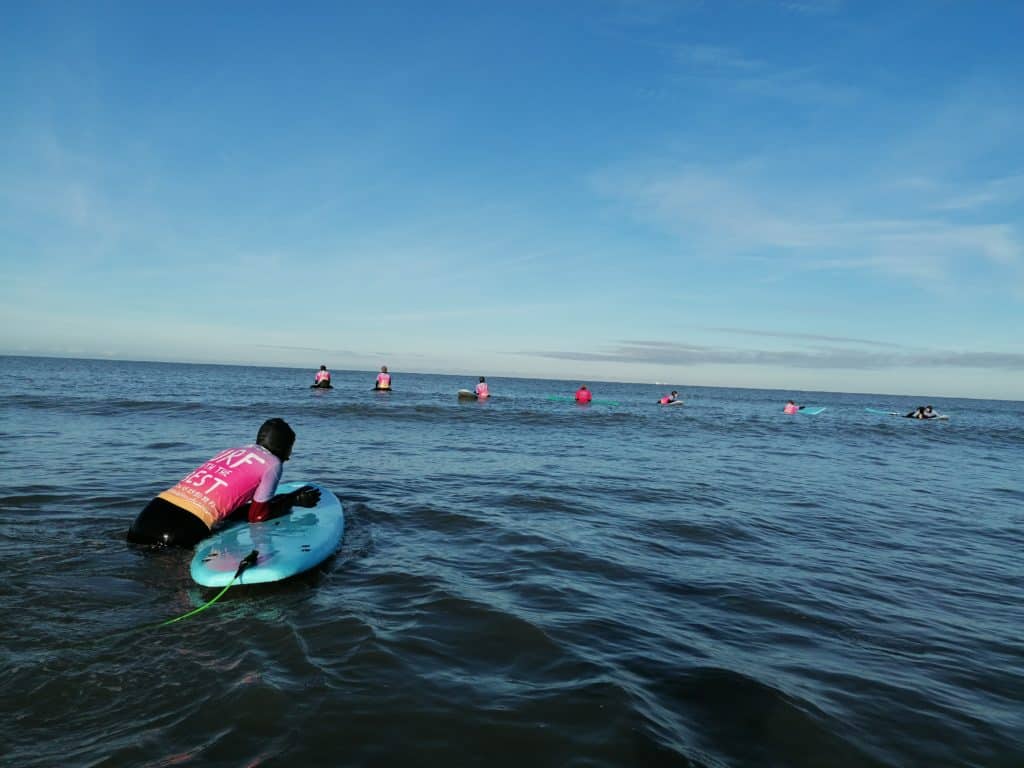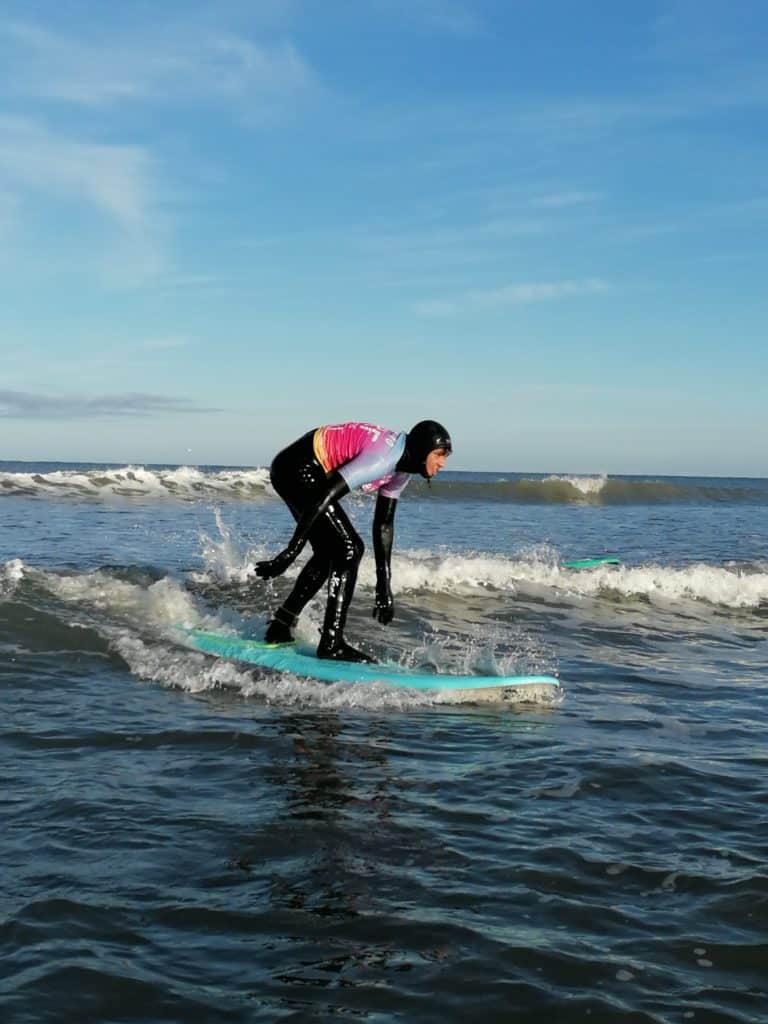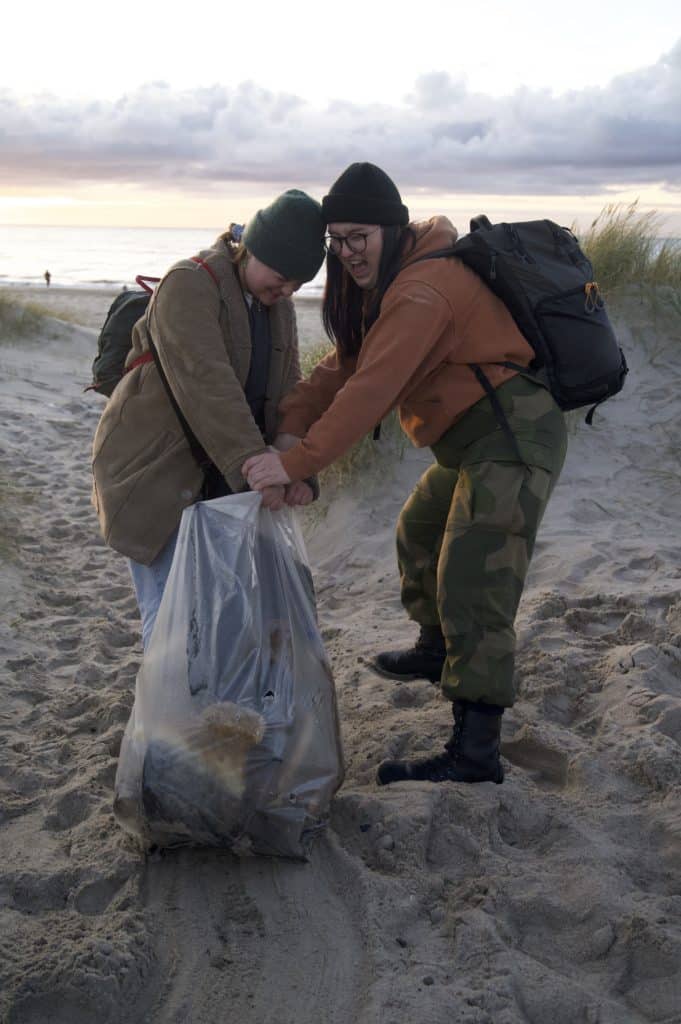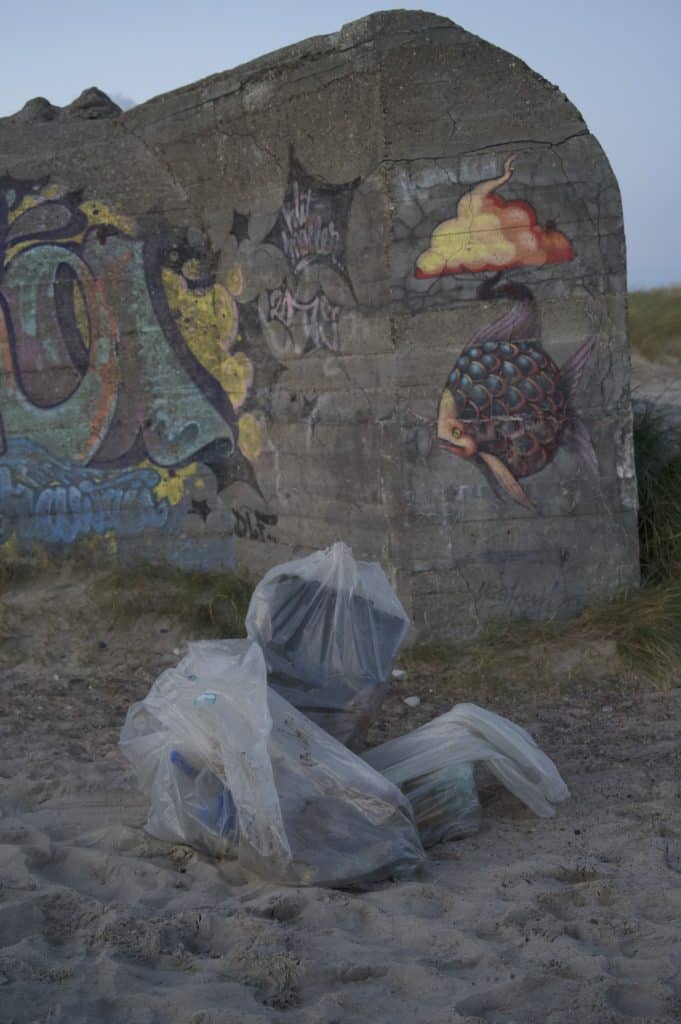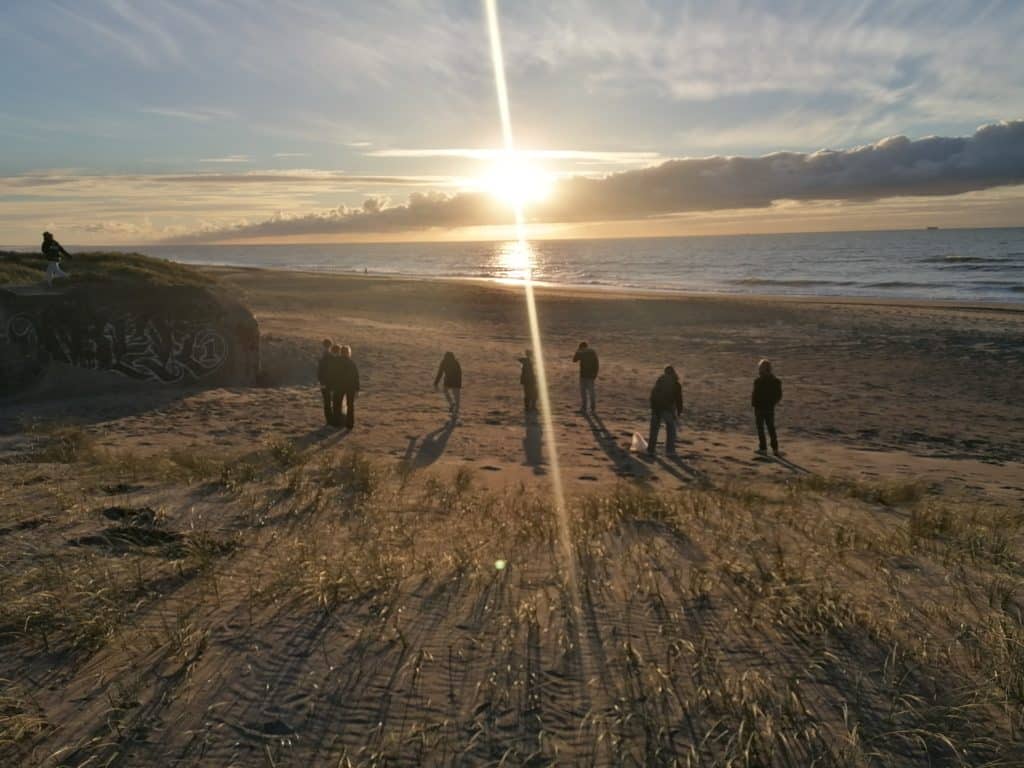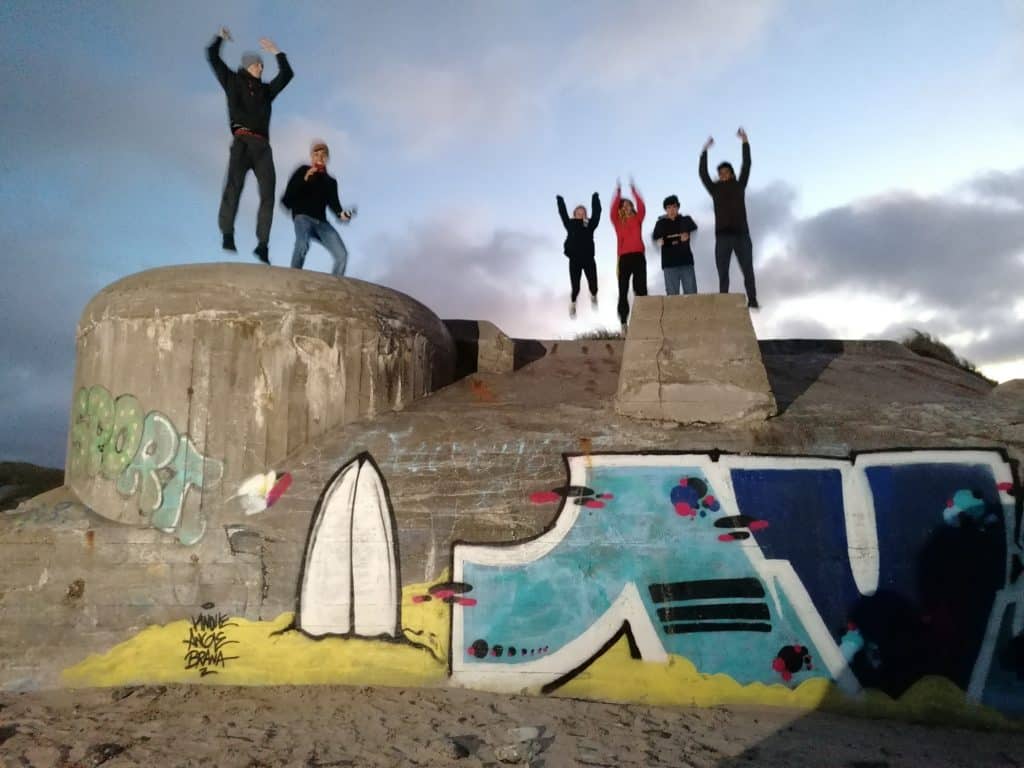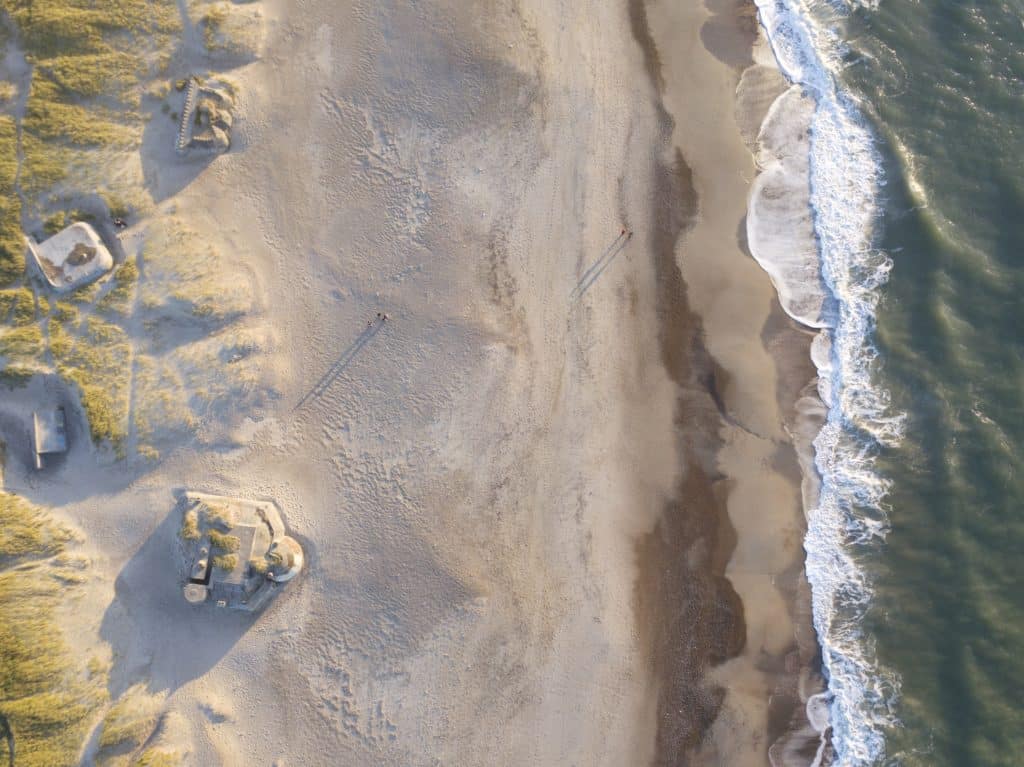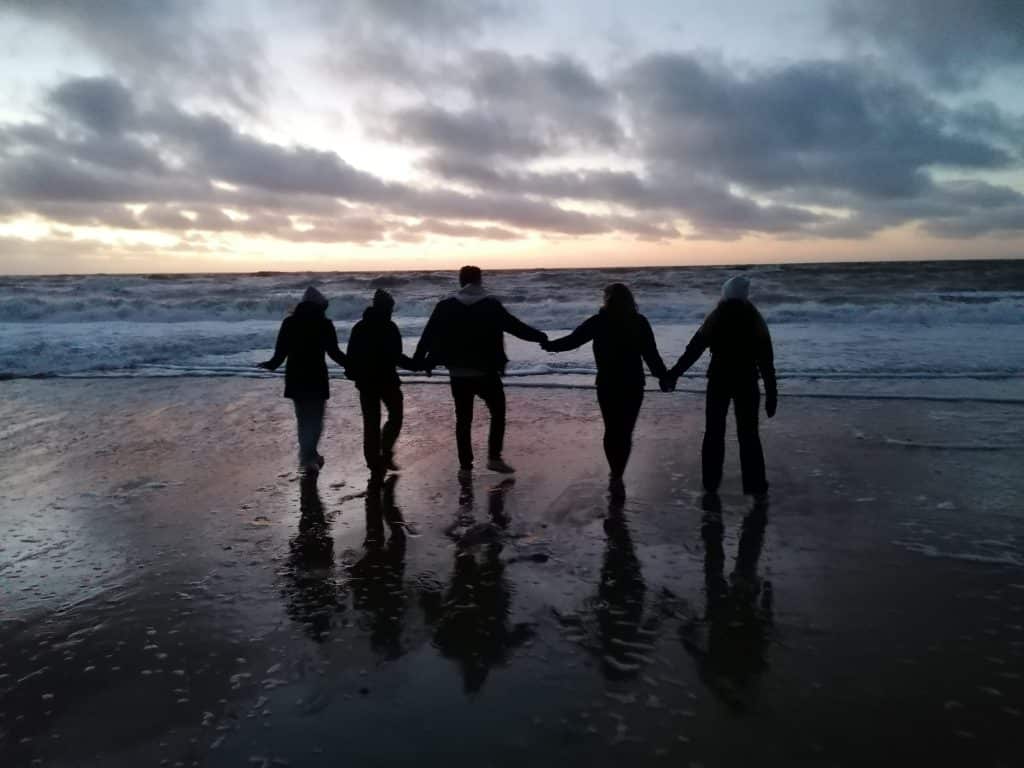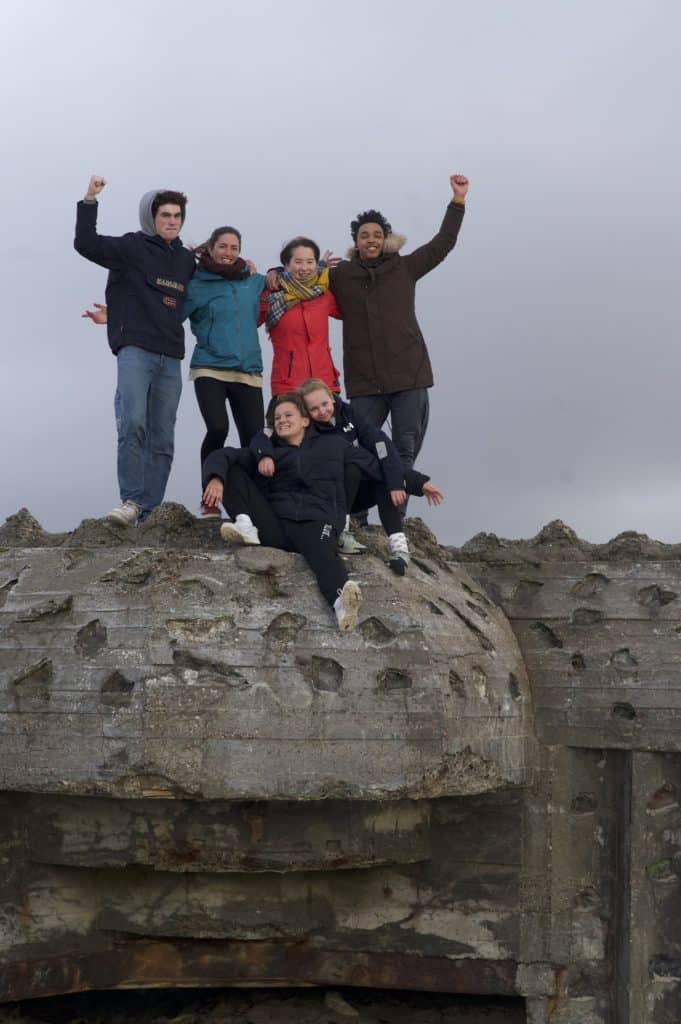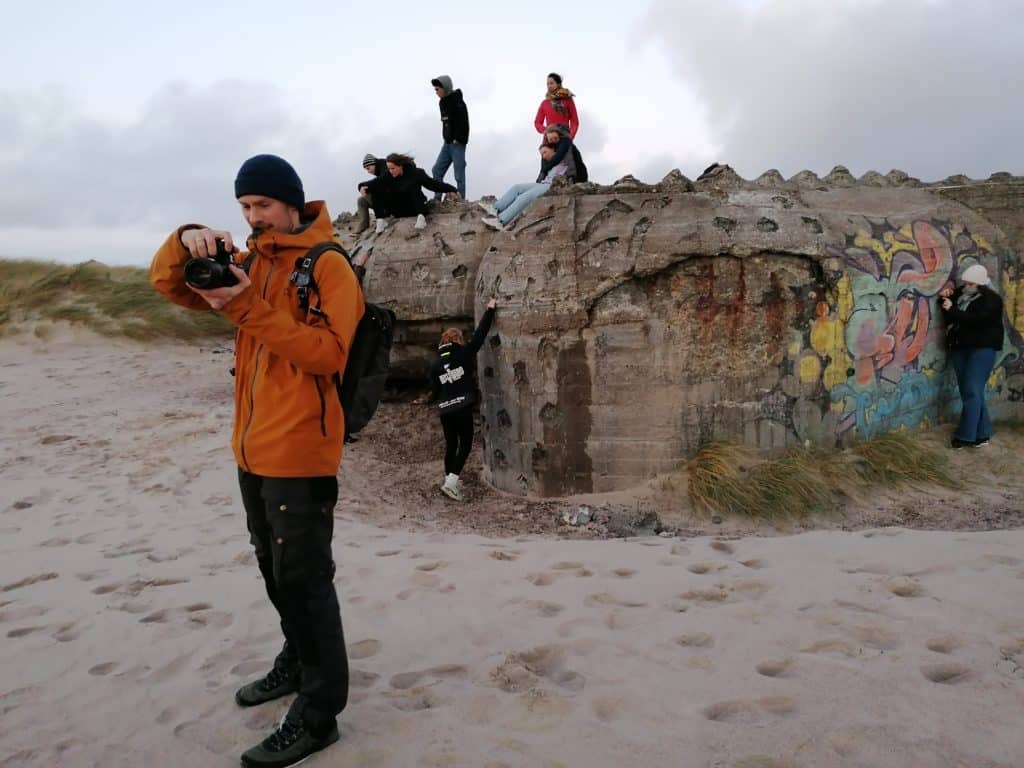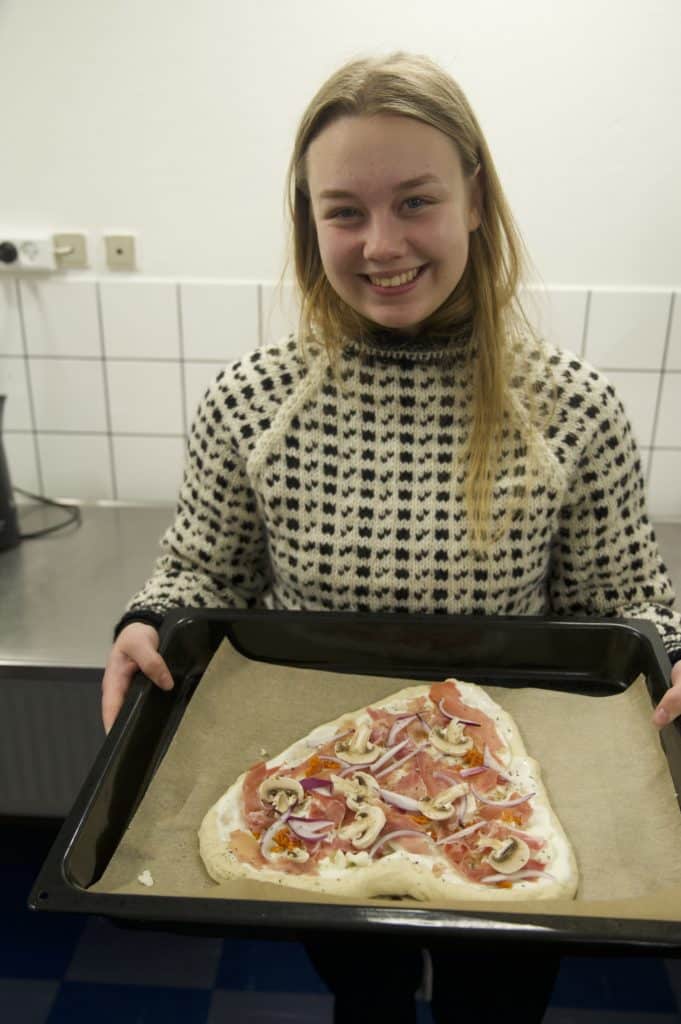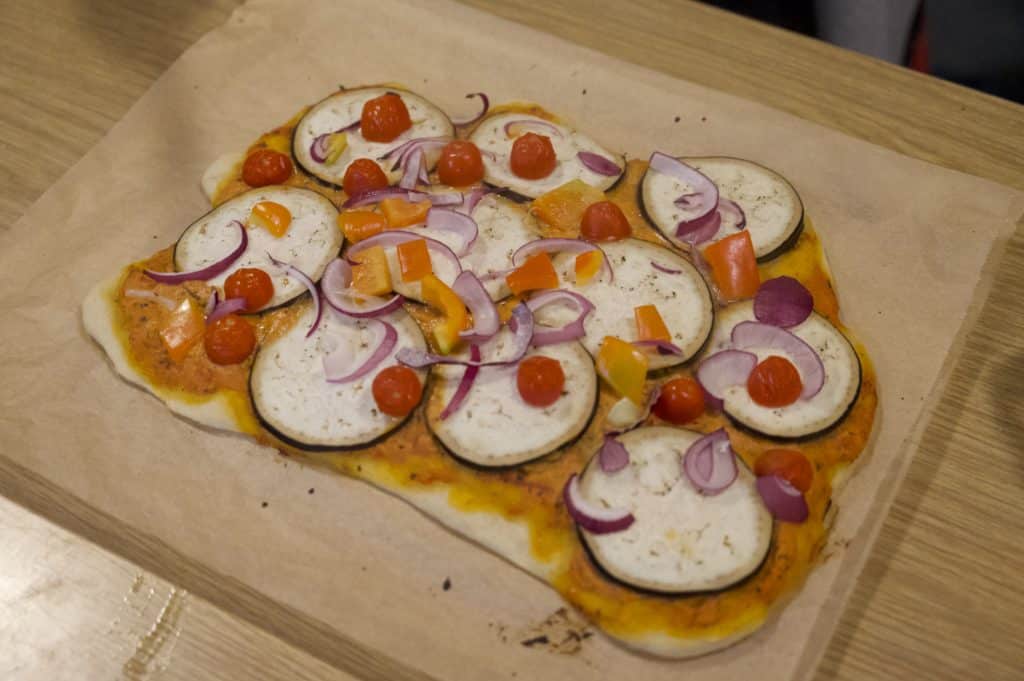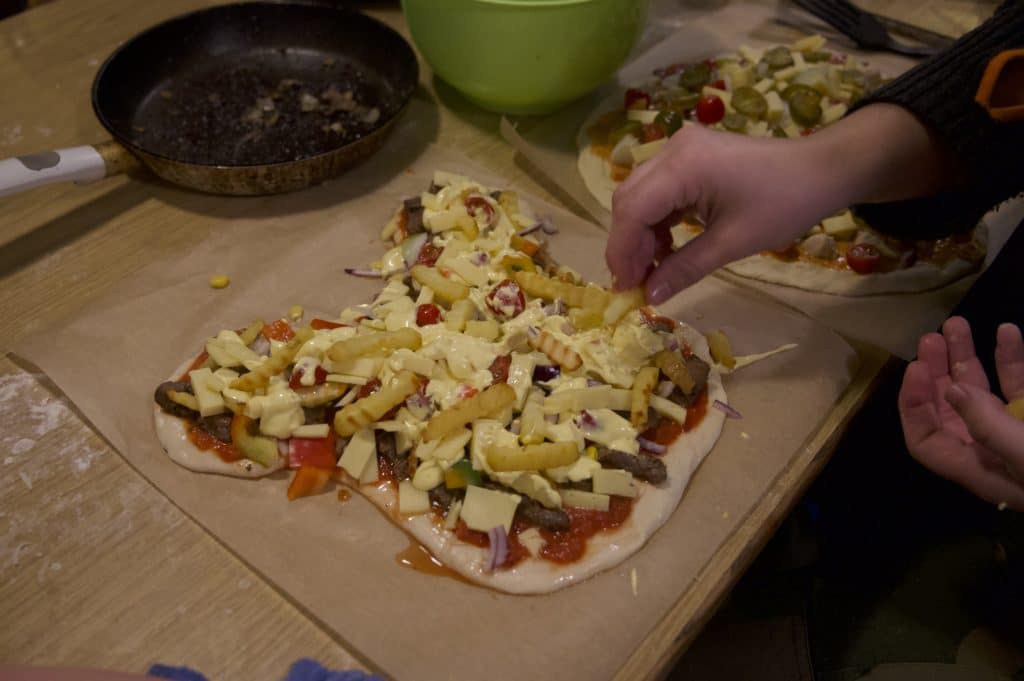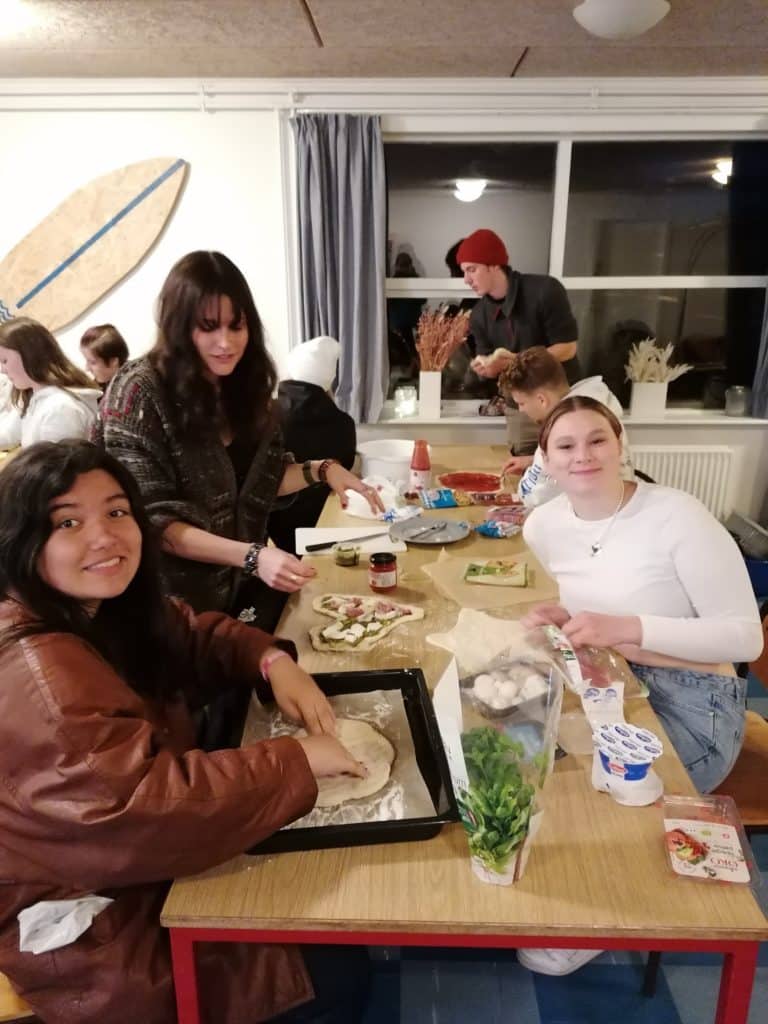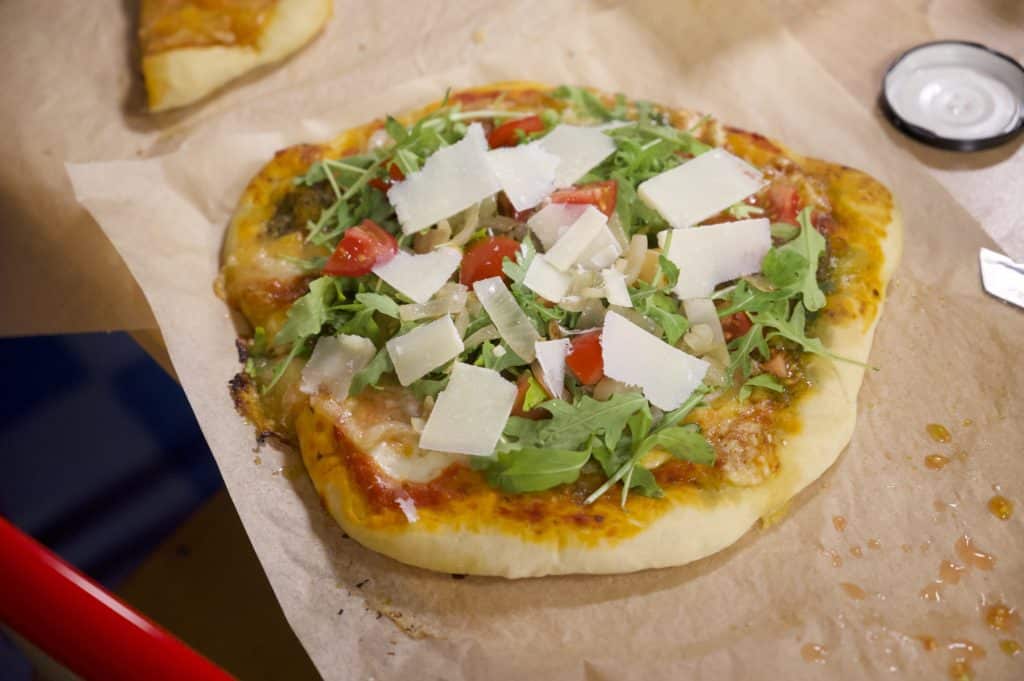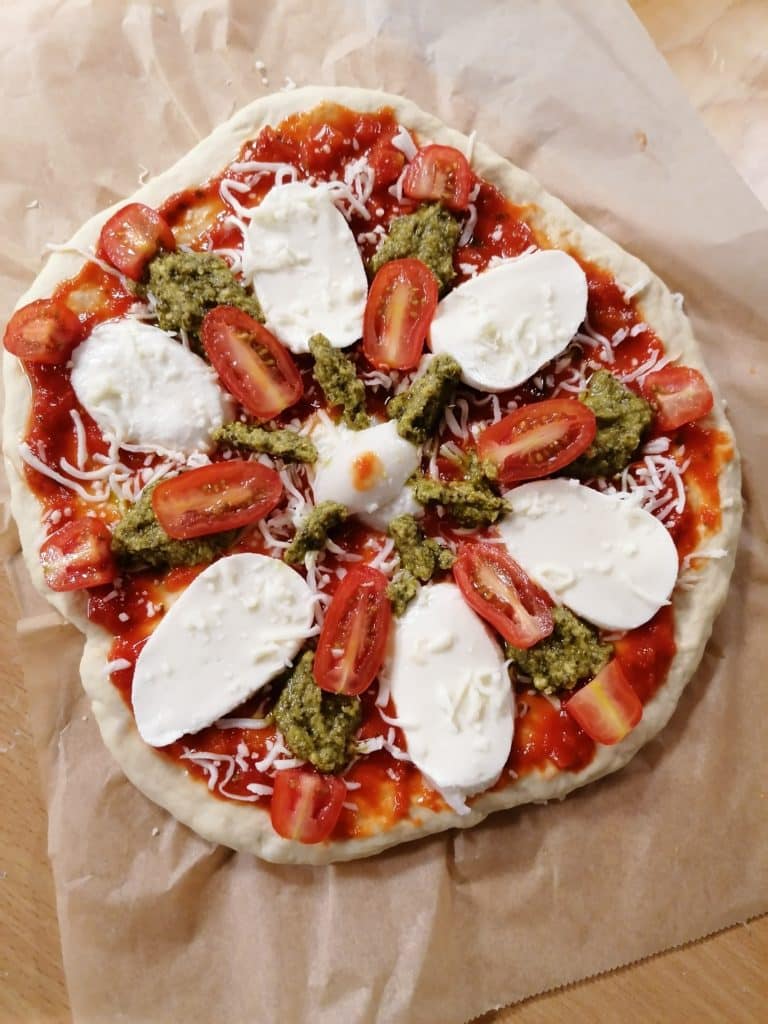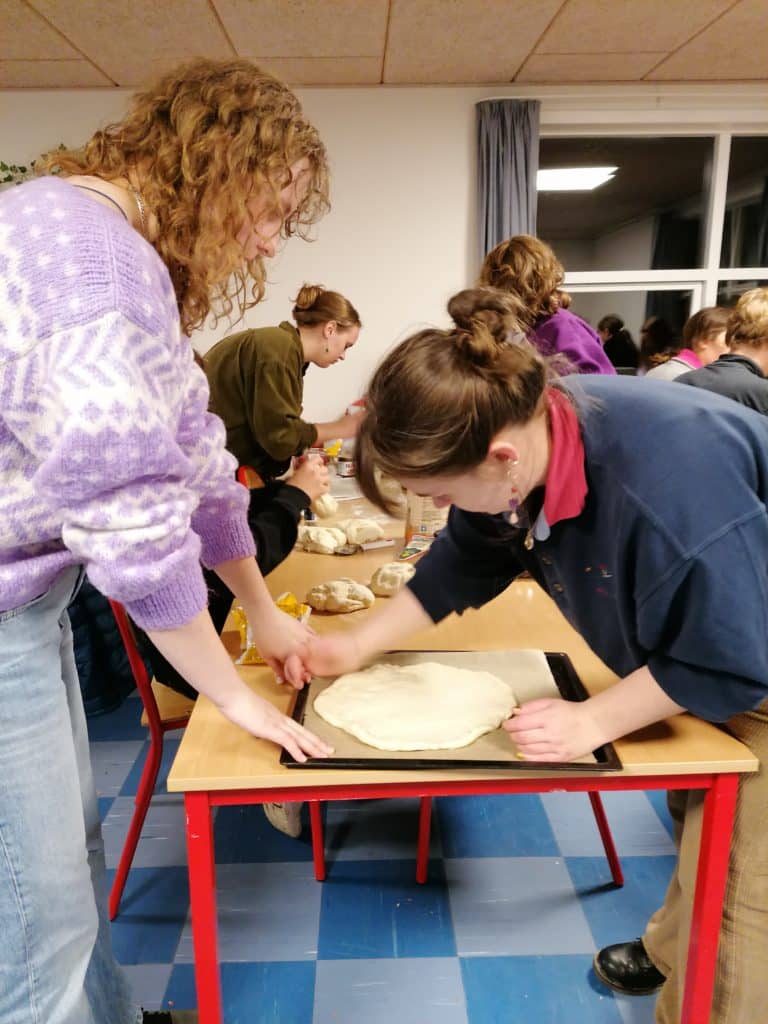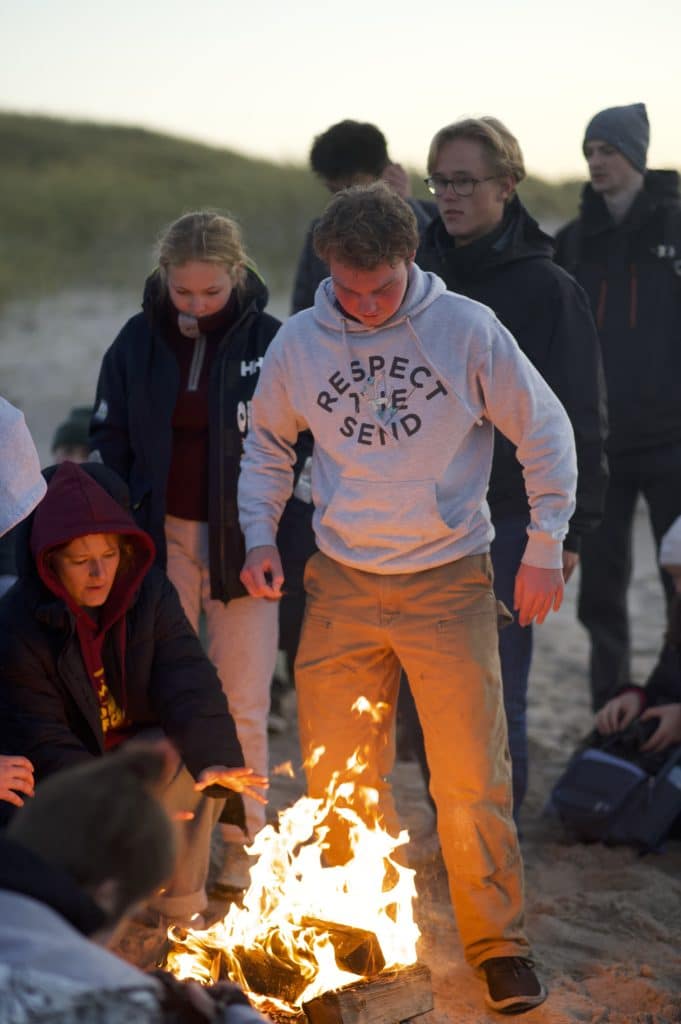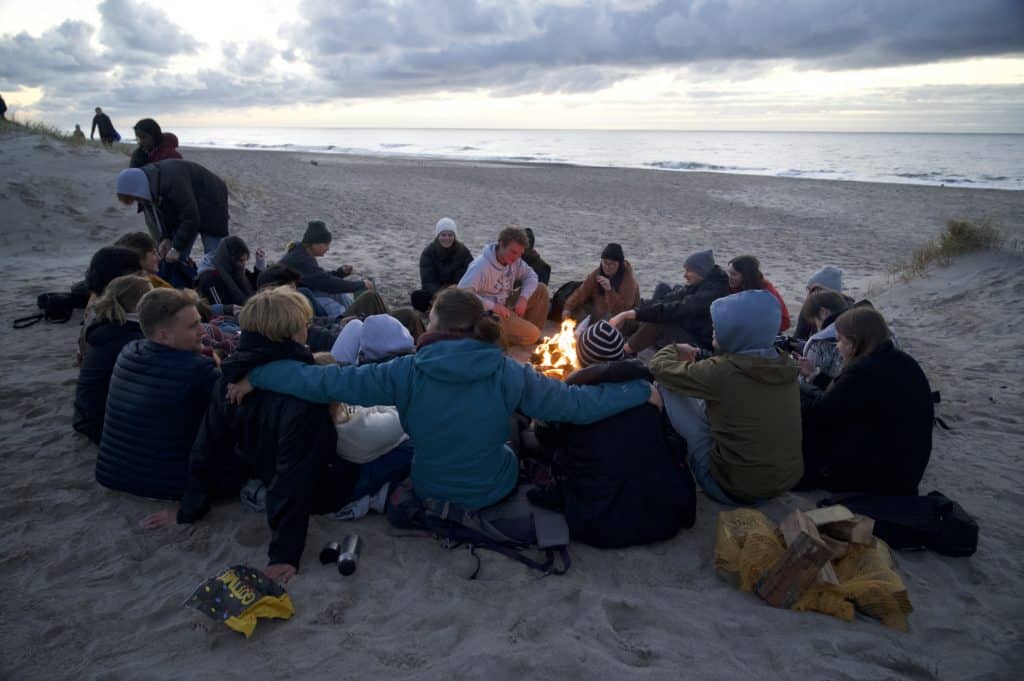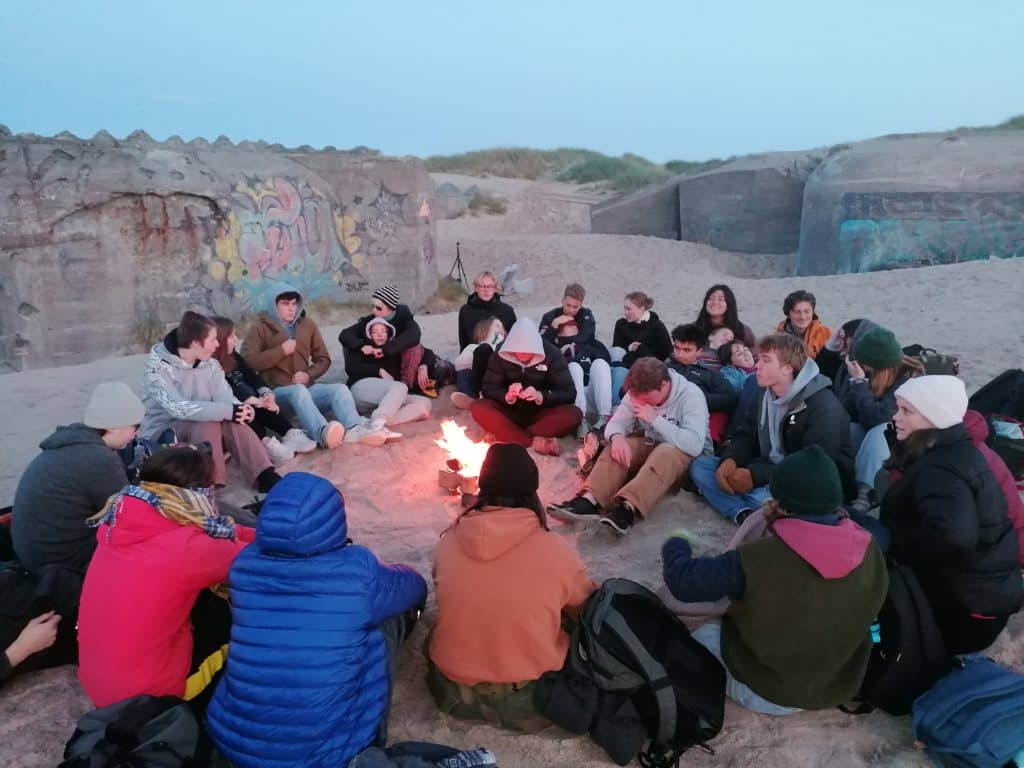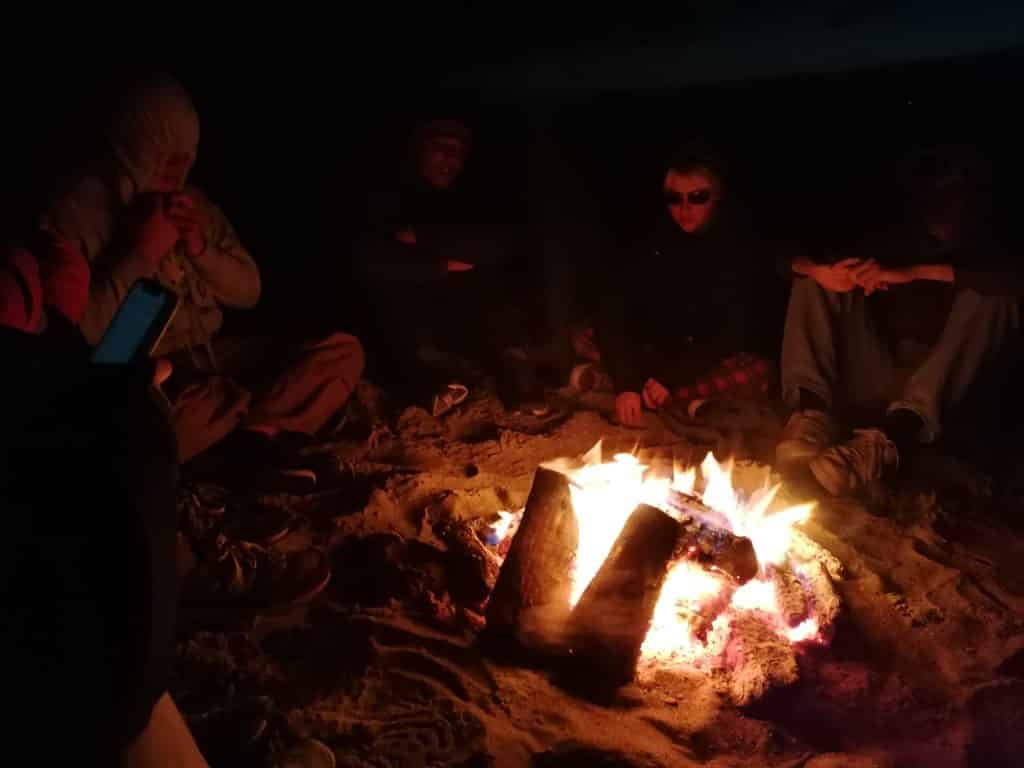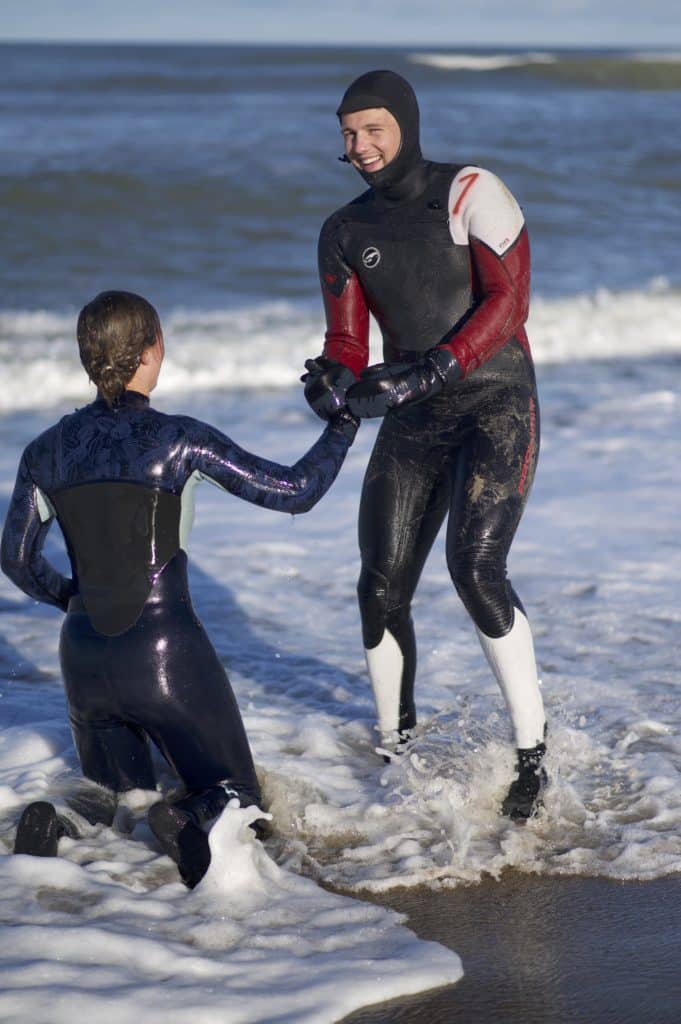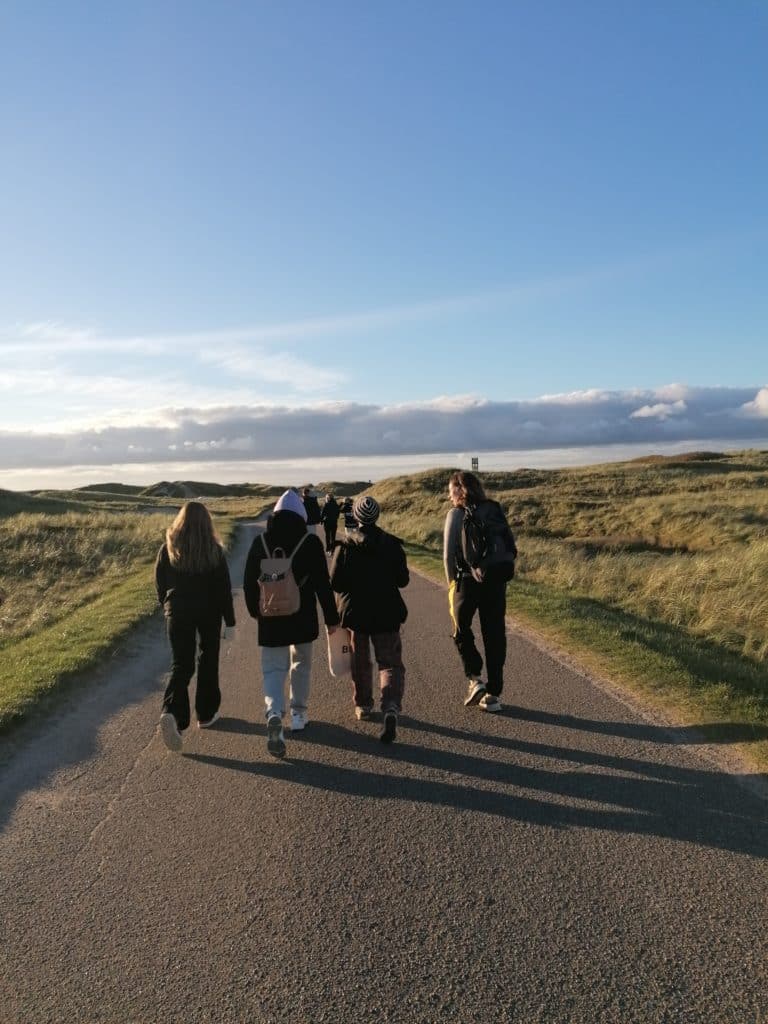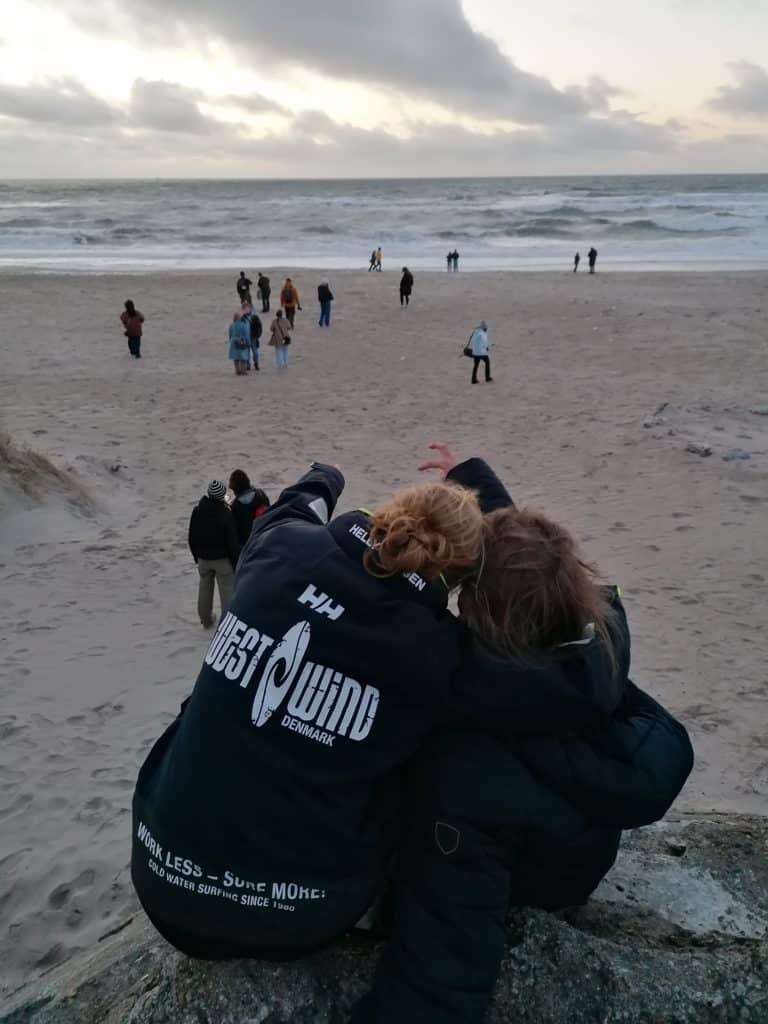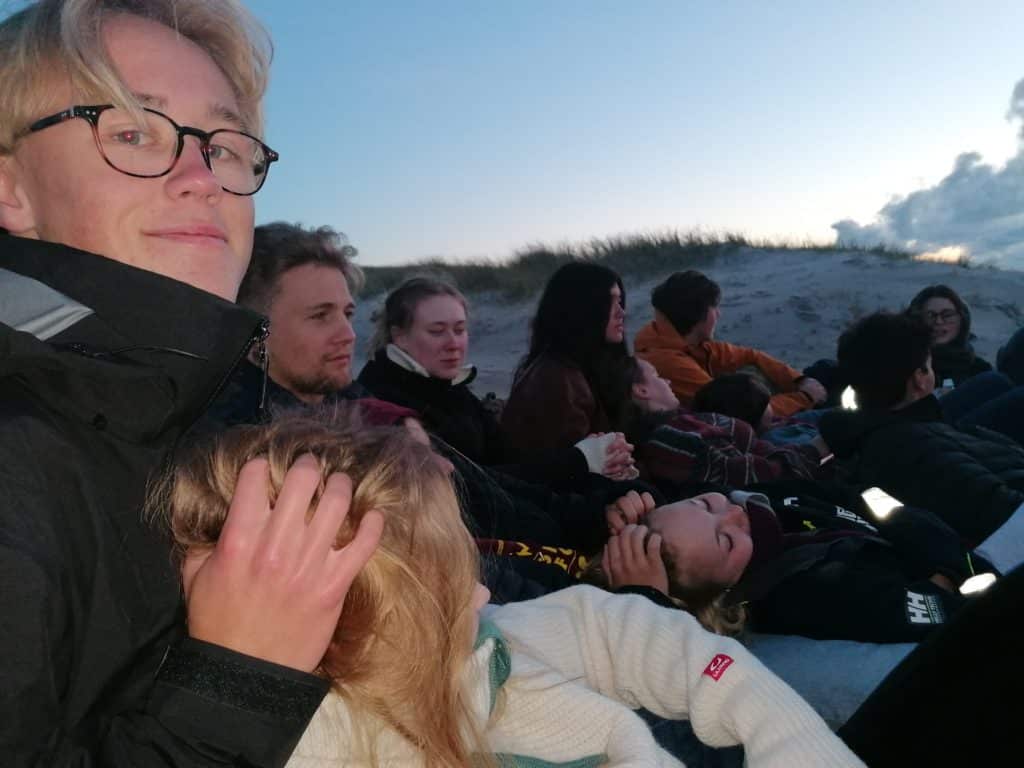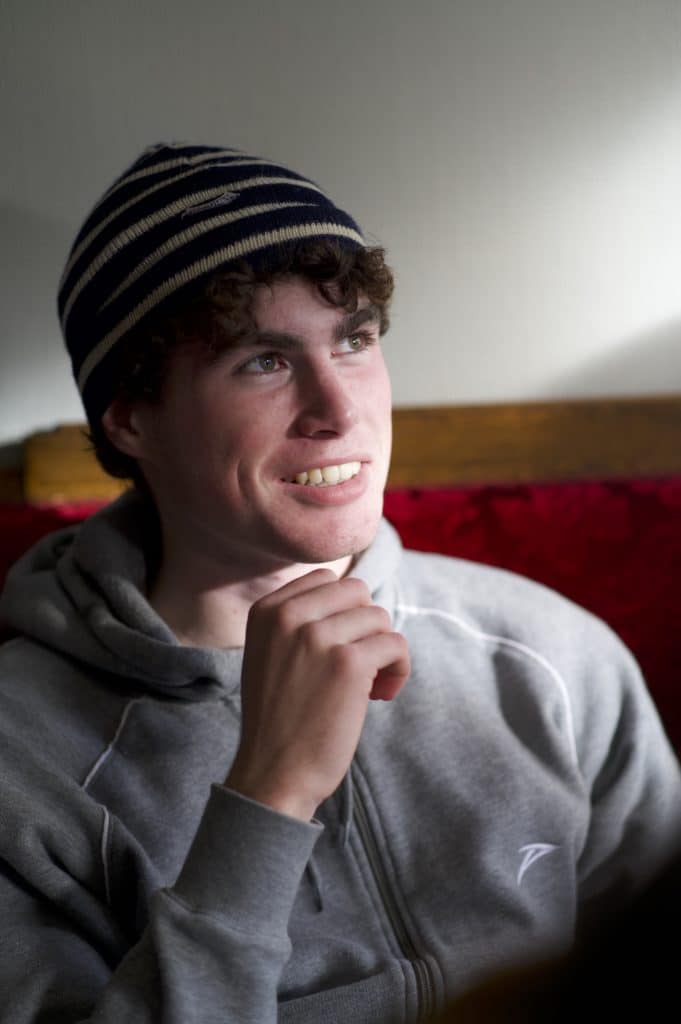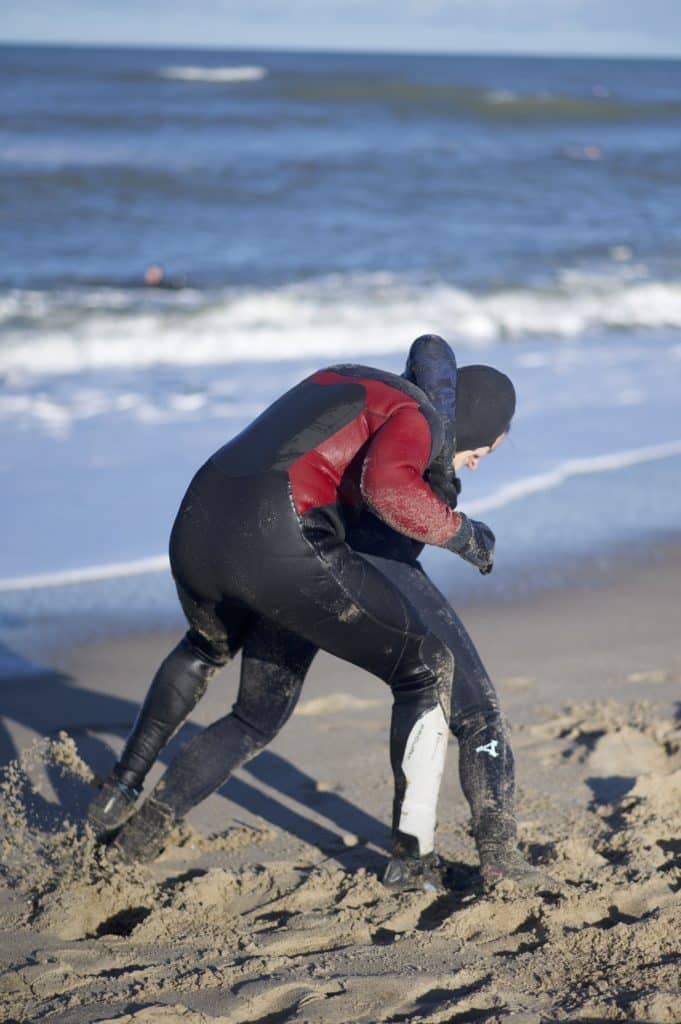Backpacker/Extreme sport on new surfing adventures in Klitmøller
Good surf conditions, good instructors, beach cleaning with the photo class, bonfire, sunset, the bunkers from the Second World War, a pizza competition and the wonderful community in the class made the trip complete.
Surfing
The main focus of the trip was to improve surfing skills. With good surfing conditions and experienced instructors from Cold Hawaii Surf Camp, everything was laid out for good development.
Read more about Cold Hawaii Surf Camp here.
Every day we started the day by:
- Make us each our own goal for what we would focus on to improve surfing technique (eg: take a pop up without having the knee down, the position on the board, look up, shuffle or other).
- Check the weather report and google maps to find out how the wind would affect the surf conditions at the beach we were going to.
- Read the surfing conditions on magic seaweed regarding the height of the swells (= the wave before it breaks), the distance between them, the direction of the base swell, etc.
Read more about Magic Seaweed here.
With 3-4 hours of surfing every day, it was fun to see the growing learning curve among the students and the feeling of mastery when they achieved something new!
Backpacking
Google Maps
During the trip, we have worked on creating a folder on google maps where we enter all the places we have been and comments on them, which may be useful if we are going back to these places and to show or give tips to family and friends.
Vlog task
On the trip, the students were given the task of making a travel vlog that they could show to friends and loved ones when they get home. The criteria were to include some key facts about Klitmøller/Denmark, to use different imaging methods to make the vlog more effective, to find a common thread and a good structure of the story in the vlog.
This week we have been working on editing the vlogs and soon we will see the final result. Looking forward to!
Beach cleaning
In true surfing culture, we took the trip down to the local beach at Nystrup Camping and cleared it of rubbish together with the Photography class. To our relief, there was no huge catch, but we did get some garbage bags filled.
The cannon battery at Klitmøller
A must-see in Klitmøller is the Cannon Battery from the Second World War. It is beautifully located down by the beach not far from the campsite we stayed at. In 1942, the bunkers were built partly to house the guns, partly for the fire control and partly for the crew. Recently, the bunkers have been tagged down and the result is what they look like today. We took advantage of the evening sun to take some nice pictures there together with the Photography class.
Pizza competition
After a good surfing session, the classes met to plan and shop for pizza night. The teachers were the lucky and self-selected judges who got to taste a total of 28 pizzas. Many creative flavors and decorations, but the winner was a dessert pizza with Nutella, strawberries and chocolate.
Bonfire on the beach
No surf trip is complete without an evening bonfire on the beach with a view of the sunset in the distance. With both classes together, many sought the warmth of the fire, and we sat in a cosy, tight circle to the sound of a crackling fire, good conversations and warm laughter.
Community
A very nice community has formed in the class where everyone is inclusive and cheers each other on. As I like to say, it's "the people and the atmosphere that make the trip good", and it really did here.
A bit of play, nonsense and nonsense are also part of a nice class trip!
Environment and sustainability
Transport
Together with the Foto class, we drove two full minibuses down to Gothenburg, then took the ferry from there to Fredrikshavn and finally a final driving leg to Klitmøller. The trip takes a few hours longer than flying, but what a flight cannot offer is the beautiful landscape we drive past, the experience of taking a ferry across national borders for the first time, a candy stop at Svinesund and, of course, a smaller climate footprint.
Food
With sustainability in mind, the students were given the task of buying food for the whole week, of which one dinner was to be vegetarian. In addition, the goal was to buy just enough food for four days, so that they neither got too little nor had to throw anything away.
The packing list listed a lunch box and a drink bottle. In true environmental and backpacker spirit, we packed lunch every day and took it to the beach. Spending a lot of time and money shopping for lunch at a restaurant is a waste when the waves are waiting in glorious sunshine.
Accommodation
By staying all nights at the same accommodation, we contributed to less environmental emissions by e.g. cleaning of the cabins and common areas.
The students brought their own bed linen/sheet bag and towels which they used every day, which reduced the climate footprint even further.

